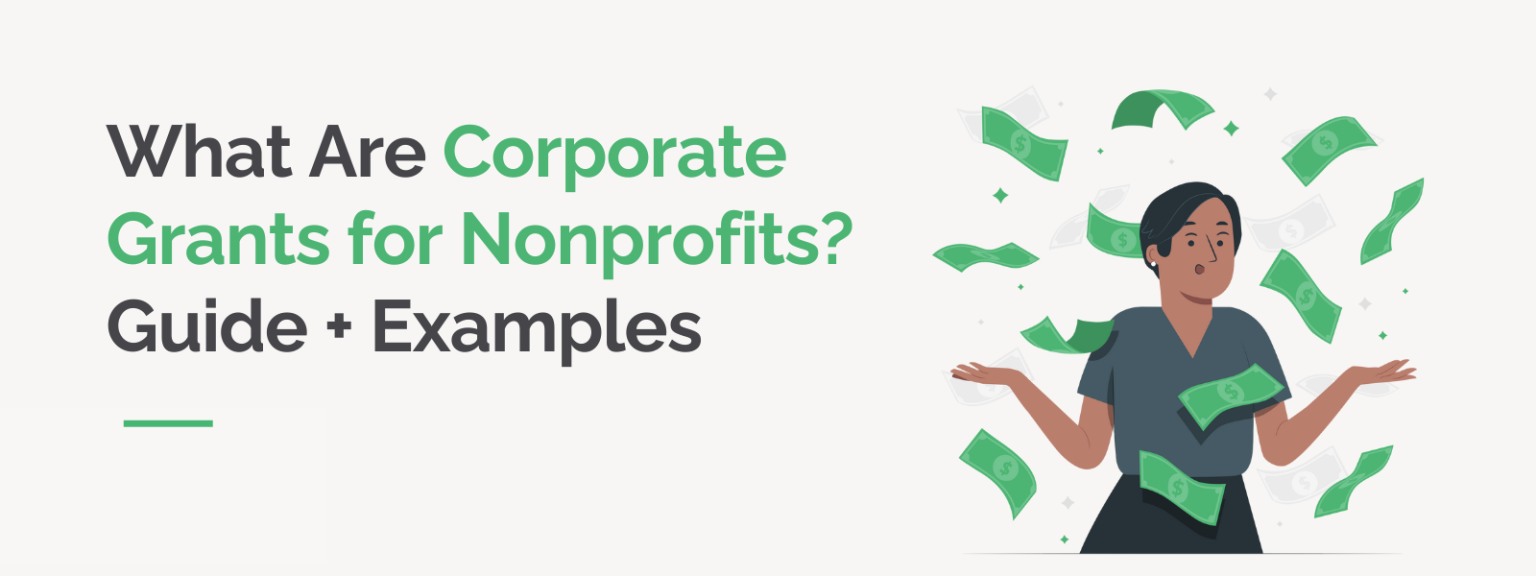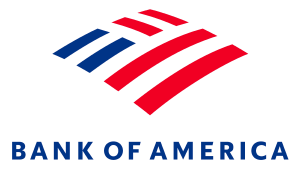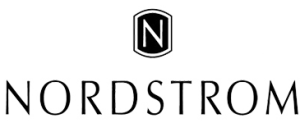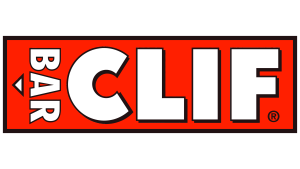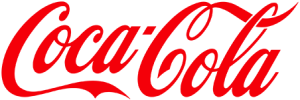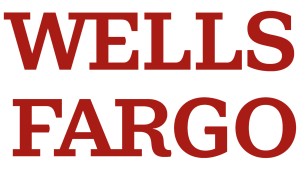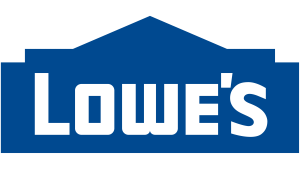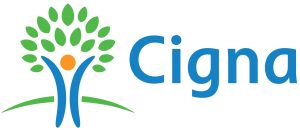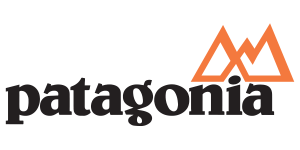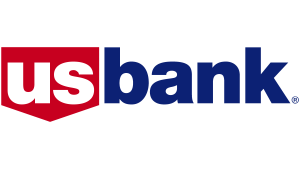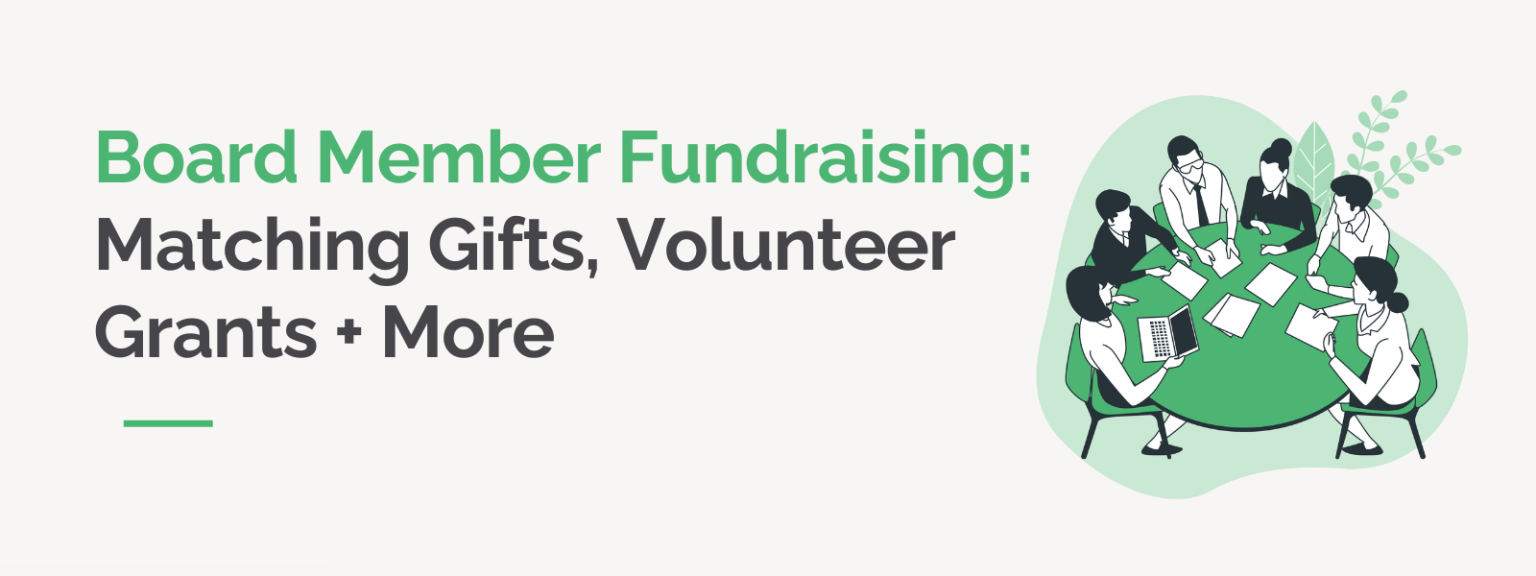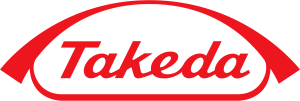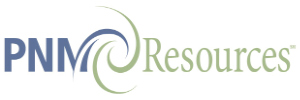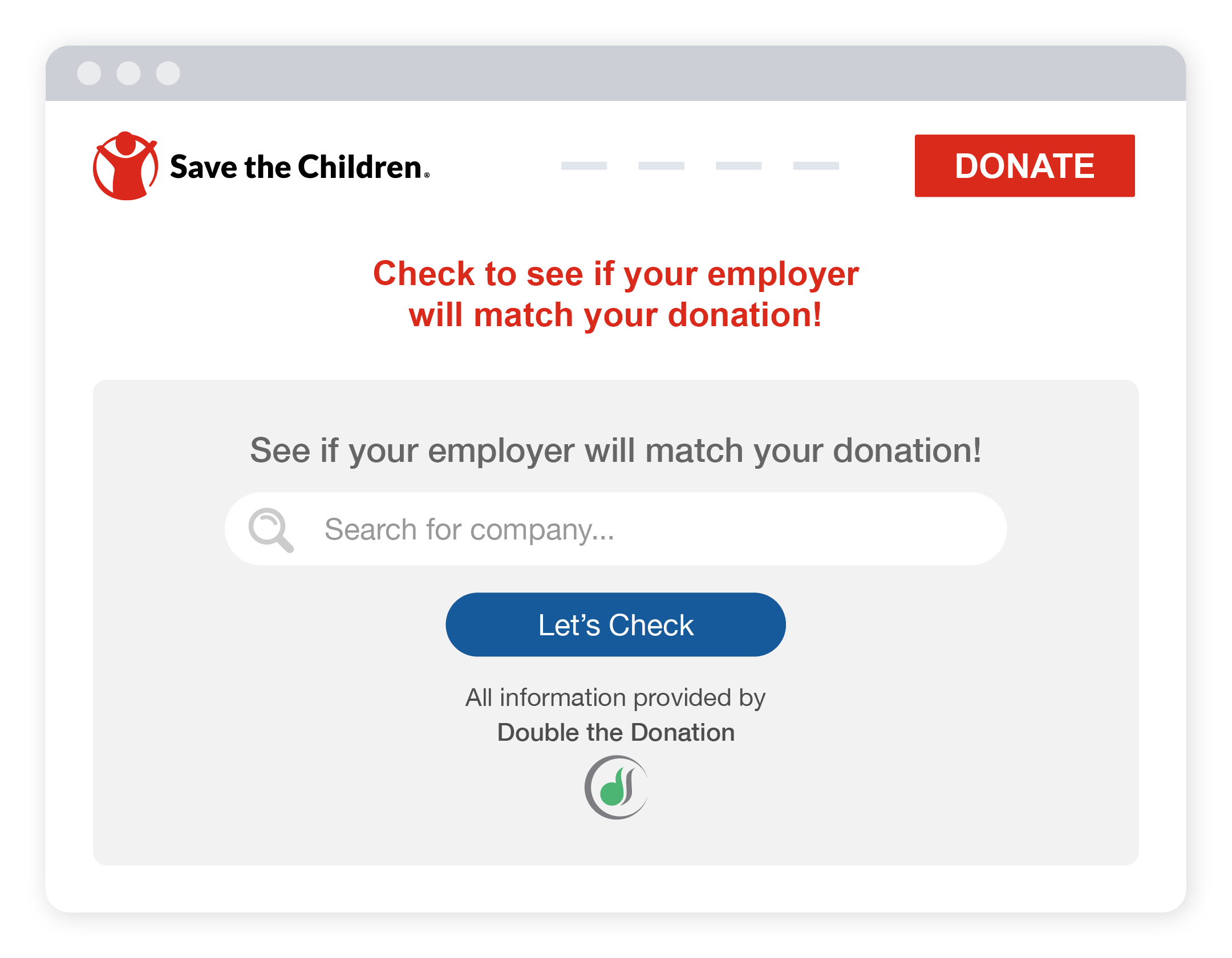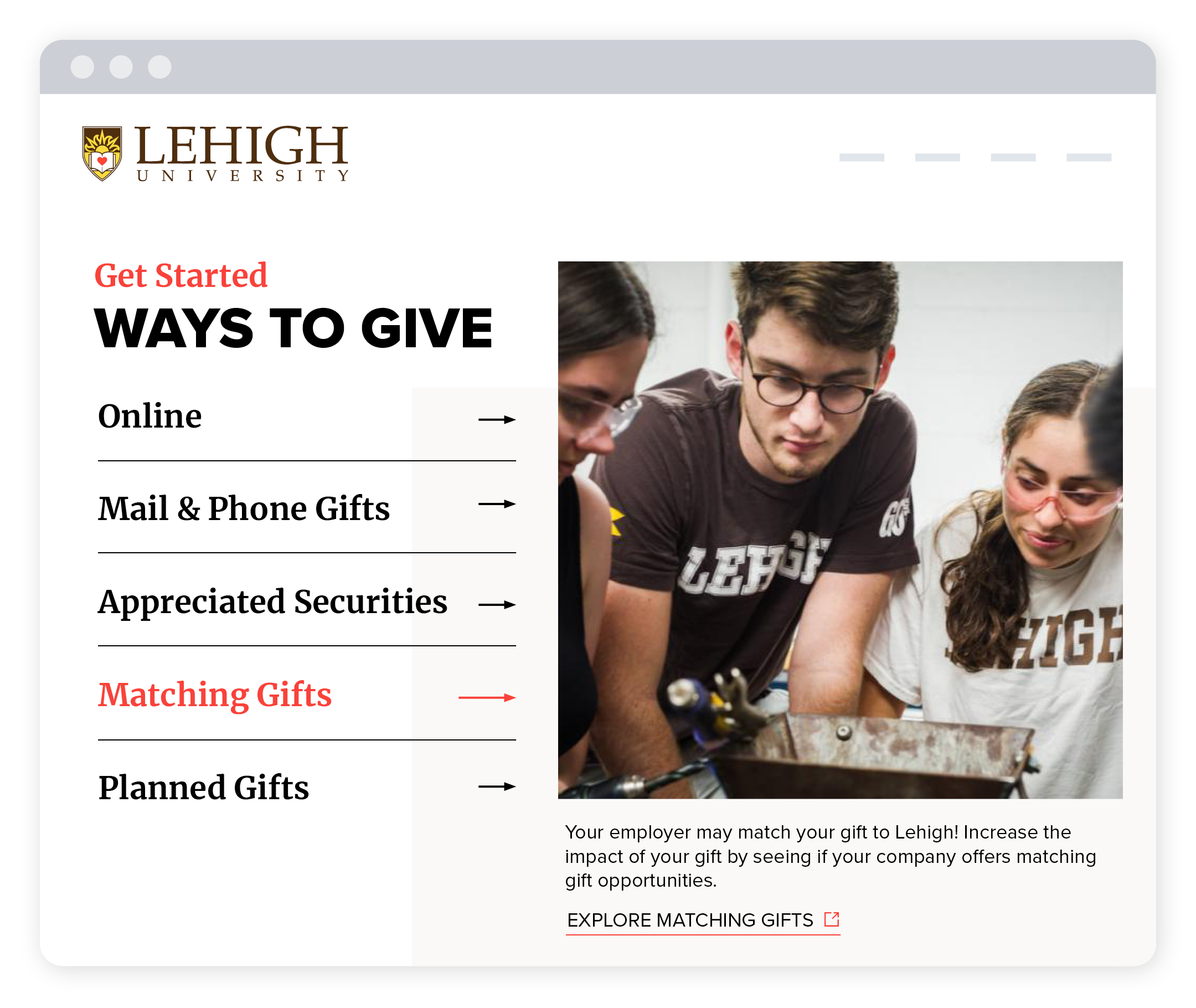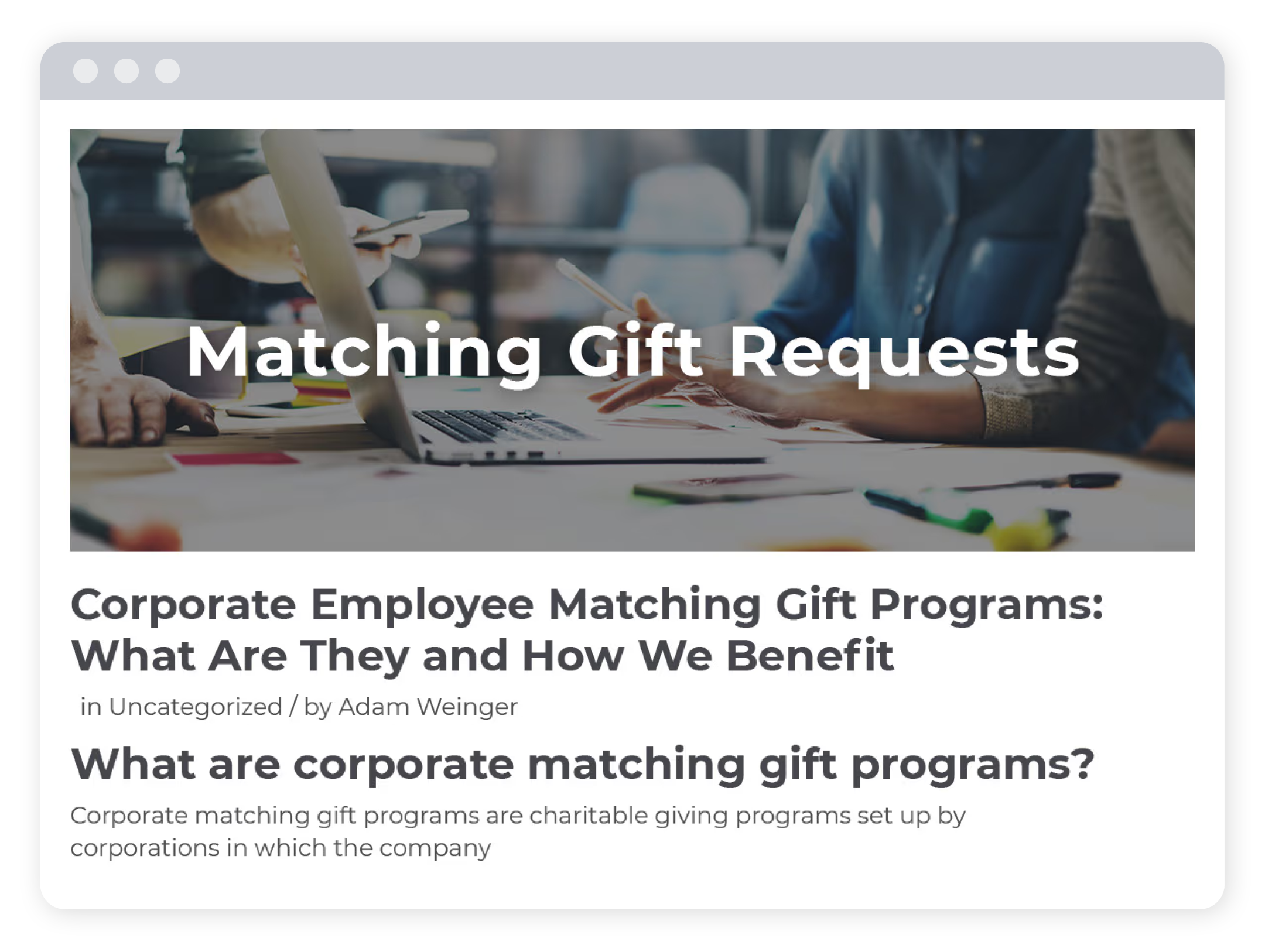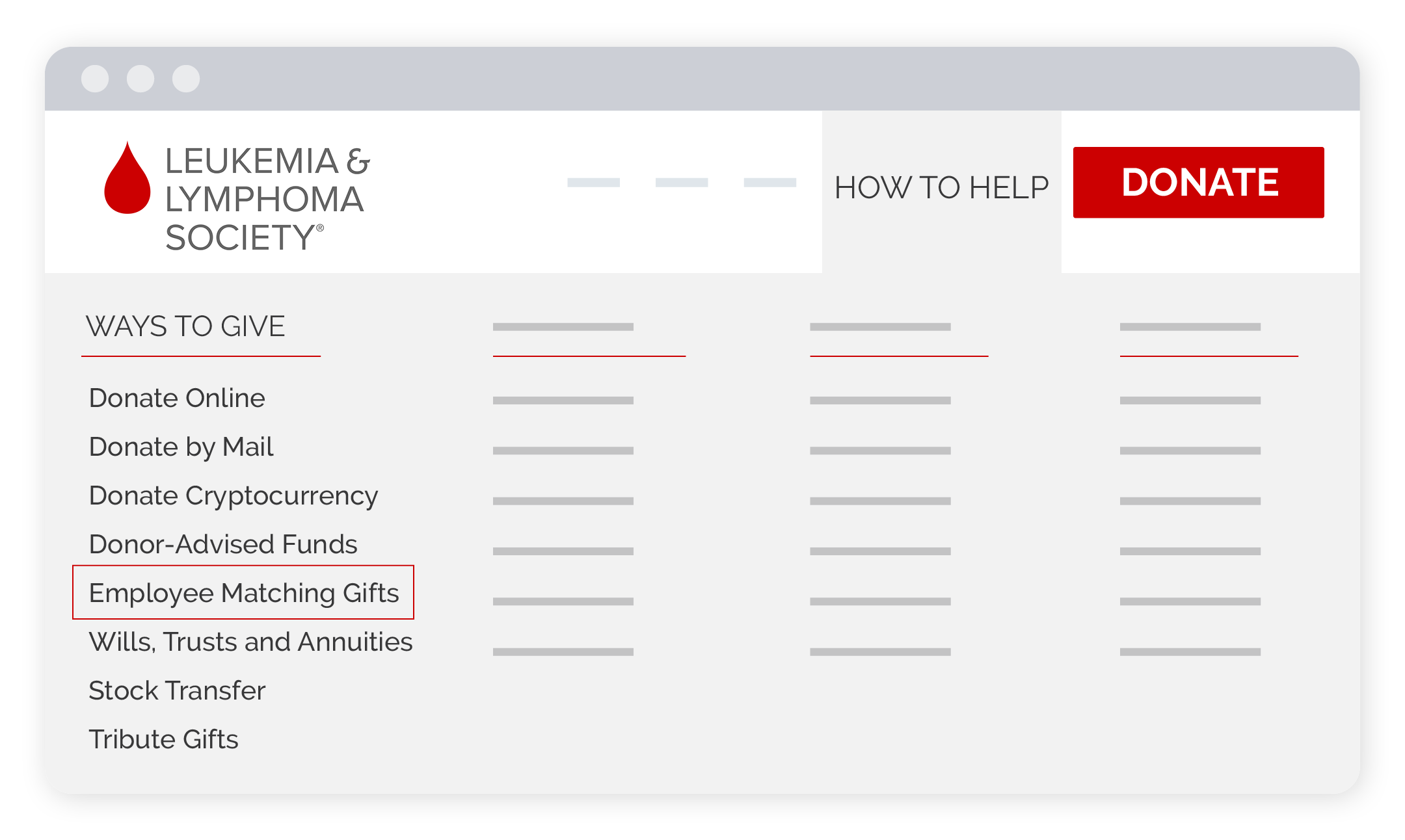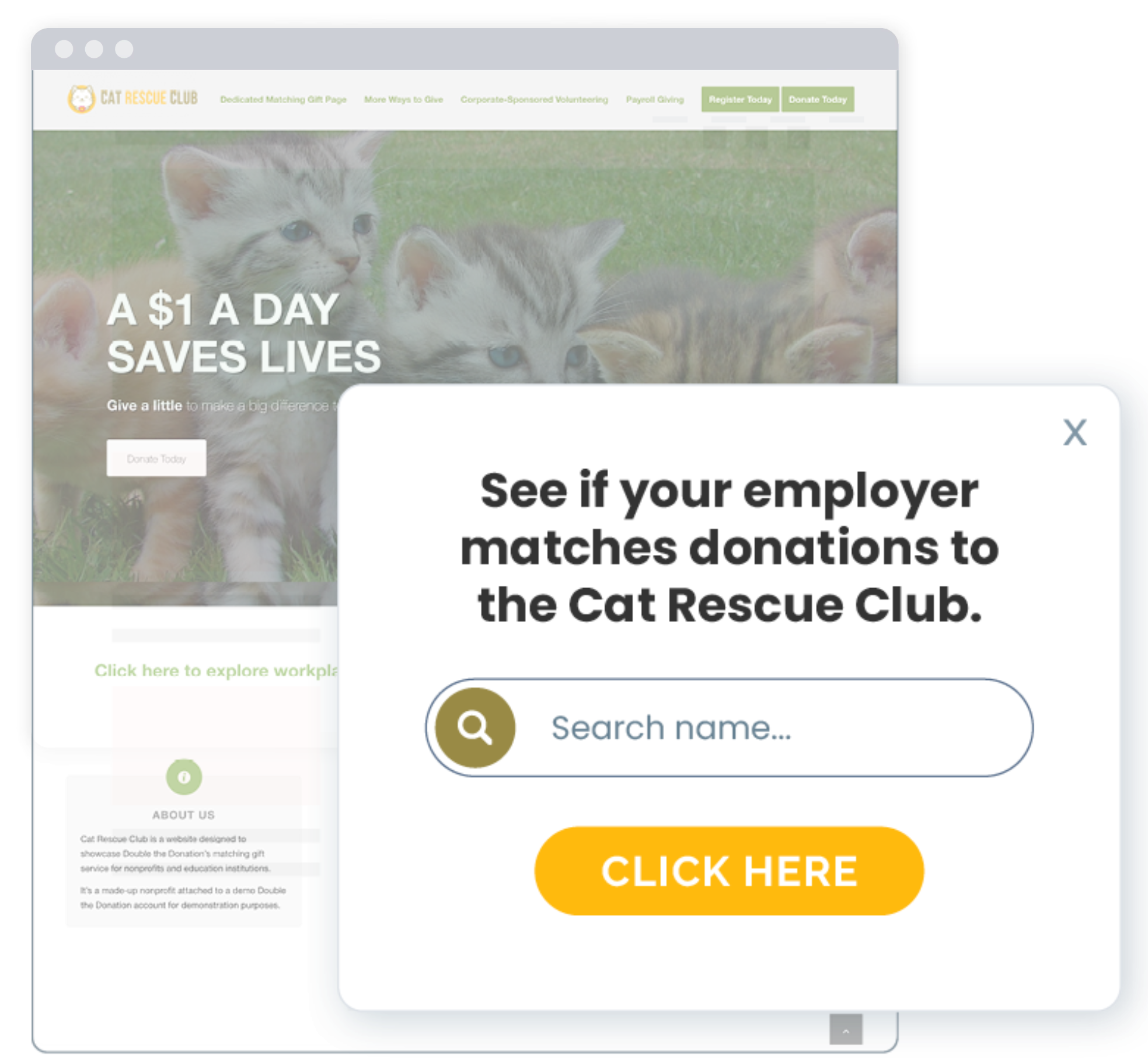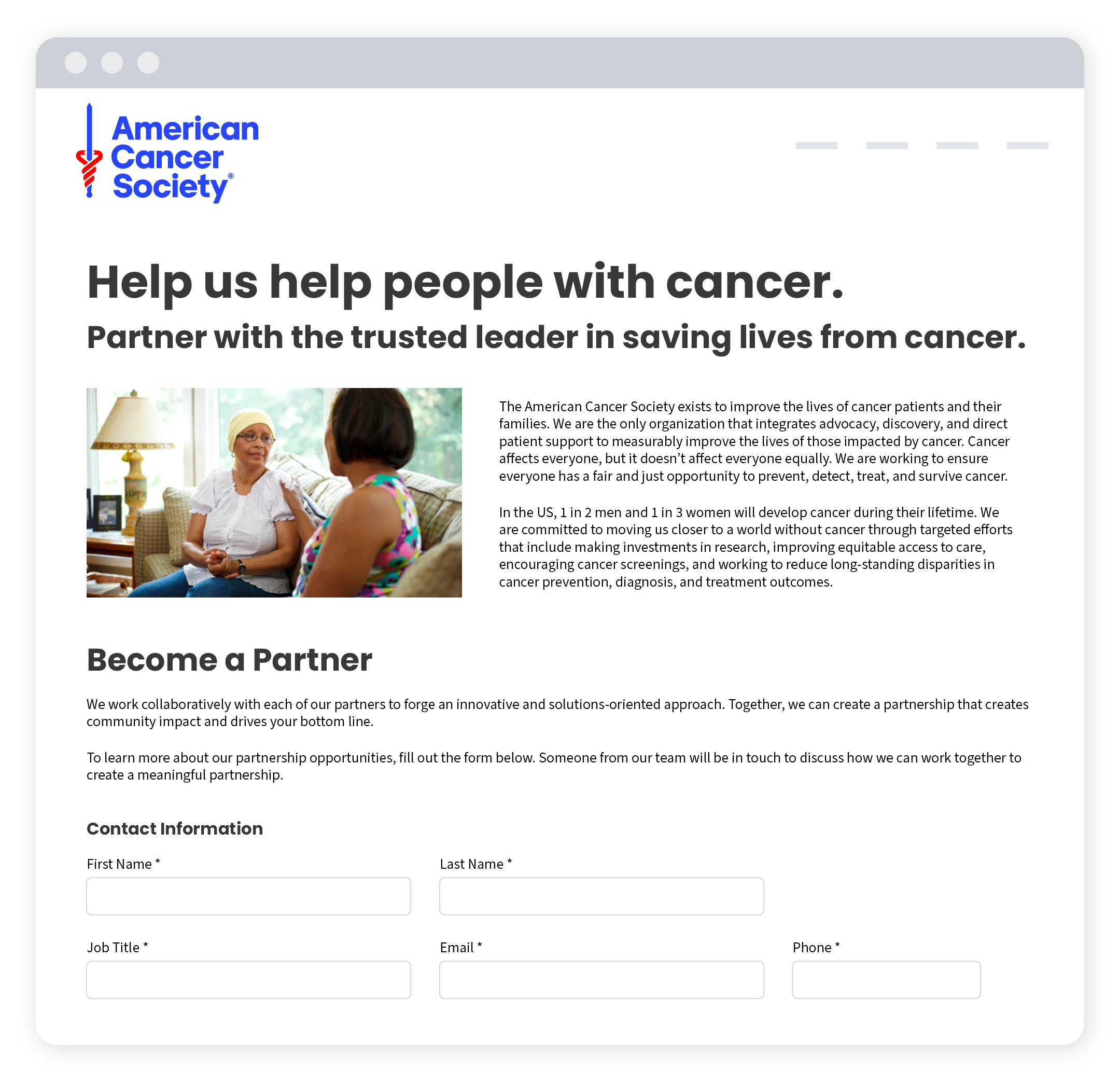Enhancing a Donor Profile With Employment Data [A Guide]
/in Donor communications, Learning Center /by Adam WeingerA well-rounded donor profile is essential for maximizing fundraising success, and employment information plays a crucial role in enhancing donor engagement and giving potential.
By integrating the right data into your donor profiles, organizations like yours can personalize outreach, increase contributions, and strengthen relationships with supporters alike.
Lucky for you, this guide explores the importance of employment data in your donor profiles, outlines effective collection methods, and highlights strategies for leveraging this information to boost fundraising results.
More specifically, we’ll cover the following:
- What is a donor profile?
- Why employment data matters in donor profiles
- Collecting employment information from supporters
- Leveraging employment data for fundraising success
- Tips for building well-rounded donor profiles
Ready to begin supercharging your donor information with powerful employment insights? Continue reading to find out how.
What is a donor profile?
A donor profile is a comprehensive record of information about an individual supporter. This information helps nonprofits understand their giving behavior, engagement history, and potential for future contributions.
These profiles typically include key details such as:
- Name
- Contact information
- Donation history
- Communication preferences
- Demographic insights
Beyond basic information, an enriched donor profile can also contain insights regarding a donor’s interests, past event participation, volunteer involvement, and—perhaps most importantly—employment details.
By building robust donor profiles, nonprofits can personalize outreach efforts, strengthen relationships, and ultimately increase fundraising success.
Why employment data matters in donor profiles
Employment data is crucial information for nonprofits looking to enhance their fundraising efforts and build stronger relationships with donors. When it comes to establishing well-rounded donor profiles, employer information is an essential piece of the puzzle.
Here’s why:
- It allows you to identify corporate giving opportunities. Tons of donors work for companies with employee giving programs (like matching gifts and volunteer grants), but they may not even know about the opportunities. When you understand where your supporters are employed, your team can uncover programs and encourage donors to get involved, driving engagement and revenue alike.
- It empowers you to personalize your outreach. The more you know about an individual, the better you can tailor your communications for them specifically. Knowing where they work allows you to segment outreach by employer, industry, workplace giving eligibility, and more—ultimately ensuring customized engagement. You can even tailor your messaging based on where an individual is in the matching gift process, thanks to Double the Donation’s new matching gift status updates!
- It permits you to estimate a donor’s giving capacity. Knowing how much an individual could potentially give is essential, and employment data can help you estimate their capacity for supporting your cause.
As you can see, the benefits of including employer data in donor profiles is multifold. If you haven’t already, now is the perfect time to begin incorporating the information in your donors’ records.
Collecting employment information from supporters
Gathering employment data from donors is a crucial step in unlocking fundraising and workplace giving opportunities. However, nonprofits must be strategic in how they collect this information to ensure accuracy and encourage donor participation.
Here are some handy ways to gather employment details from supporters:
- Include Employer Fields on Donation Forms – Adding a simple field for employer information on online and offline donation forms makes it easy for donors to provide their workplace details at the point of giving.
- Ask During Event Registrations – Whether supporters are signing up for a fundraising event, gala, or volunteer opportunity, include a section for employer information in the registration process.
- Leverage Workplace Giving Tools – Platforms like Double the Donation allow donors to quickly search for their employer’s workplace giving programs, often leading them to input their company name while making a donation.
- Survey Donors and Volunteers – Periodically send surveys to your supporter base asking for updated information, including their current employer, to ensure records remain accurate.
- Utilize LinkedIn and Other Public Data Sources – If supporters haven’t provided employment details, checking LinkedIn profiles or company directories (where publicly available) can help fill in missing gaps.
- Enlist an Employer Append Service — Utilizing a dedicated data enhancement provider can help locate employment information by scanning against publicly and privately held data sources.
For the best results, you’ll likely want to incorporate a combination of the above-recommended methods. This will allow you to access employment information for the largest number of donors possible, ensuring that you can maximize workplace giving opportunities, encourage matching gifts, and personalize engagement strategies to boost both donor participation and fundraising success.
Leveraging employment data for fundraising success
Employment data is a key component in building a well-rounded and actionable donor profile, offering nonprofits valuable insights into their supporters’ potential for fundraising success. Here’s how your team can benefit from employment data in your supporter records:
Unlock Workplace Giving Programs
One of the most significant advantages of knowing a donor’s employer is the ability to identify workplace giving opportunities. For example, many corporations offer matching gift programs, where they match donations made by their employees to eligible nonprofits. By tracking employment information, nonprofits can proactively encourage donors to request matches, effectively doubling or even tripling the impact of their gifts.
Beyond matching donations, many corporations also provide volunteer grants or volunteer time off when employees contribute their time to charitable causes. By knowing where a donor works, nonprofits can track volunteer activities and inform supporters about the potential to earn grant money through their workplace. This is another avenue for maximizing fundraising and tapping into a donor’s full giving potential without asking them to give more!
Encourage Cross-Functional Support
Nonprofits can leverage employment information about their supporters to unlock even more opportunities for engagement and corporate giving. Many companies offer multiple forms of philanthropic support, such as matching gifts, volunteer grants, and sponsorships—and understanding where donors work can help nonprofits tap into these resources more effectively.
For example, if a donor works for a company with a known volunteer grant program, that’s a perfect opportunity to encourage them to get involved beyond financial contributions. Highlight how their employer will donate funds for the time they spend volunteering, making their impact even greater.
On the other hand, if a volunteer works for a company that matches financial donations, it can be a great way to get them on board with monetary giving.
Uncover In-Kind Giving or Grant Opportunities
A nonprofit’s supporters are often the key to unlocking corporate grants and in-kind donations—but only if the organization knows where they work. Many companies offer direct corporate grants or donate goods and services to charitable organizations, and leveraging employment data can help nonprofits identify and secure these opportunities.
How? Supporters can provide an inside connection, serving as a bridge to decision-makers in charge of distributing funds and resources. Employees may even be able to nominate your nonprofit for funding or introduce you to the right contacts.
Not to mention, Double the Donation’s database can now provide information on corporate sponsorship programs like grants and in-kind donations, making it easier for nonprofits to identify businesses offering these opportunities.
Strengthen Corporate Partnerships
Employment data can help nonprofits identify clusters of donors employed by the same company or industry. By recognizing these connections, organizations can approach businesses with workplace giving programs and establish partnerships that benefit both the nonprofit and its supporters.
Strengthening these corporate ties can lead to long-term collaborations, fundraising opportunities, and increased visibility for the organization.
Identify High-Potential Donors
Employment data can also help nonprofits segment their donor base by employer size, industry, and giving capacity. For example, donors working for large corporations may have access to more generous matching gift programs or higher volunteer grant amounts. By understanding these dynamics, nonprofits can prioritize engagement with high-potential donors, ensuring they are leveraging every opportunity for financial support.
Tips for building well-rounded donor profiles
Building a well-rounded donor profile is essential for maximizing engagement and increasing fundraising success. By incorporating the following strategies, fundraisers can build detailed and actionable donor profiles that enhance engagement, increase contributions, and strengthen long-term relationships.
1. Track engagement history.
Understanding a donor’s journey with your nonprofit is essential for building strong relationships and optimizing your fundraising efforts. Tracking engagement history allows organizations to see how supporters interact over time, from donations and event attendance to volunteer work and advocacy efforts.
By maintaining records of these interactions in your CRM, nonprofits can personalize their outreach, recognize loyal supporters, and tailor future fundraising appeals based on past engagement. This data helps identify high-potential donors, re-engage lapsed supporters, and create meaningful connections that encourage long-term involvement.
2. Collect key data insights as donors engage.
The best time to gather valuable donor data is when supporters are actively engaging with your organization. Whether they’re making a donation, signing up for a newsletter, or attending an event, nonprofits should seize these moments to collect insights like employer information, communication preferences, and giving motivations.
Simple form fields or follow-up surveys can capture these details without overwhelming donors. By continuously collecting relevant data, organizations build richer donor profiles that improve engagement and fundraising outcomes.
3. Encourage self-reported updates.
Donors change jobs, move to new locations, and shift their philanthropic interests over time. To keep donor profiles accurate, nonprofits should provide easy ways for supporters to update their information on their own. For example, this can be done through self-serve donor portals, email campaigns with update requests, or periodic surveys.
All in all, encouraging donors to keep their profiles current ensures that nonprofits can reach them effectively and leverage opportunities like matching gifts and corporate giving programs.
4. Consider an append service to fill in gaps.
Even with proactive data collection, donor profiles may have missing or outdated information. Luckily, data append services can help nonprofits fill these gaps by cross-referencing donor records with external databases to update contact details, employment information, and more.
These services enhance donor insights without requiring additional effort from supporters, allowing nonprofits to maximize corporate giving potential and personalize outreach based on accurate, up-to-date data.
Wondering if an employer append is right for you? Take the quiz below to find out.
5. Ensure clean data practices.
Maintaining clean and organized donor data is crucial for effective fundraising and engagement. For the best results, nonprofits should regularly audit their databases to remove duplicates, correct outdated information, and standardize data formats.
Plus, implementing data hygiene best practices—such as consistent naming conventions, accurate email categorization, and privacy compliance—helps organizations avoid errors and ensures that fundraising efforts are based on reliable information.
All in all, a well-maintained donor database leads to more efficient outreach, better donor relationships, and increased fundraising success.
Wrapping up & additional resources
Incorporating employment data into donor profiles provides nonprofits with valuable insights that can significantly enhance their fundraising efforts. From identifying matching gift opportunities to engaging corporate partners in new ways, employment information enables organizations to maximize donations and build stronger donor connections.
By implementing effective data collection methods and leveraging workplace giving programs with the right tools and resources, nonprofits can optimize their fundraising strategies and drive greater impact in the long run.
Interested in learning more about nonprofit fundraising and corporate giving? Check out these additional resources:
- The Value of Donor Employer Information in Workplace Giving. Collecting and leveraging employer information can unlock valuable opportunities in workplace giving. See how knowing where your donors work can maximize contributions and enhance fundraising success.
- The Ultimate Guide to Employer Appends for Fundraisers. Discover how employer appends can enrich your donor profiles with crucial employment data. Such a service can help you identify new opportunities for corporate giving programs and beyond! Learn more here.
- Driving Value with Employer Data in the Supporter Lifecycle. Employment data can be used throughout the donor lifecycle—from initial engagement to long-term stewardship. Find out how tracking and utilizing employer information at every stage can deepen relationships and increase funding.
Driving Value with Employer Data in the Supporter Lifecycle
/in Donor communications, Learning Center /by Adam WeingerMatching Gifts for Retirees: Companies to Know & More
/in Company Spotlights, Matching Gift Companies, Learning Center, Lists and Rankings /by Adam WeingerNonprofits are always looking for ways to maximize donations, but one often-overlooked opportunity lies in matching gifts for retirees. After all, many companies extend their corporate matching gift programs to former employees, allowing organizations to double or even triple contributions from retired donors.
However, these programs are often underutilized simply because retirees and nonprofits aren’t aware of their potential. In this guide, we’ll highlight companies that offer matching gifts for retired employees, how your organization can identify eligible donors, and tools you can use to encourage participation in the programs.
Specifically, we’ll cover:
- What are corporate matching gifts?
- Do retirees qualify for matching gift programs?
- Companies that match donations for retirees
- How a matching gift database can help
- Ensuring retirees are informed about matching gifts
If retired individuals make up a good portion of your organization’s donor base (and more than likely, they do), targeting matching gifts for retirees can be an excellent way to go. We’ll show you how you can do so here, starting with the basics.
What are corporate matching gifts?
Corporate matching gifts are a form of philanthropy in which companies match donations made by their employees to eligible nonprofits. These programs effectively double—or sometimes even triple—the impact of an individual’s gift, providing nonprofits with additional funding at no extra cost to the donor.
Here’s how it typically works:
- An individual donates to a nonprofit.
- The individual confirms whether their company offers a matching gift program.
- If available, the individual submits a request for a matching gift to their employer.
- The individual’s employer reviews the matching gift request and ensures it aligns with the company policy.
- The company approves the request and disburses a donation for a matching gift to the organization.
While these programs are extremely valuable for all parties involved, they often go underutilized, largely due to a lack of awareness about the opportunity. And that’s why understanding matching gifts—and communicating their potential to supporters—is so essential.
Looking for a more in-depth overview of matching gifts? Get our free downloadable guide that covers everything you need to know!
Do retirees qualify for matching gift programs?
Because each company specially designs its matching gift initiatives to align with its own needs and resources, each program is ultimately unique. That means there’s no one-size-fits-all answer to the question posed. However, the short version is that yes, retirees are often eligible to participate in their companies’ matching gift programs post-employment. And with more businesses expanding their programs in recent years, retirees are more likely to be included than ever before. But it really will depend on the specific company’s policy.
Within the realm of companies that do match gifts for retirees, some offer the same matching gift benefits as they do for active employees as a way to continue supporting their philanthropic endeavors. On the other hand, others may have modified guidelines, such as lower match ratios or donation caps.
To determine if a retiree’s donation is eligible for a match, nonprofits should encourage donors to check with their former employers or use a matching gift database (which we’ll cover more below).
By identifying and engaging retired donors who qualify for corporate matching, nonprofits can unlock valuable funding opportunities that often go overlooked.
Companies that match donations for retirees
Wondering which companies offer retiree-inclusive matching gift programs? We’ve compiled a list of ten leading examples below:
1) Verizon
Verizon Communications Inc. is a global leader in telecommunications, providing wireless, broadband, and digital services to millions of customers. As part of its corporate social responsibility efforts, Verizon offers a generous matching gift program, which extends to both current employees and retirees.
Through Verizon’s matching program, donations made by retirees to eligible colleges and universities can be matched at a 1:1 ratio, effectively doubling the impact of their contributions. The company typically sets an annual limit of $5,000 per retiree, and accredited schools must meet specific eligibility requirements to qualify.
All in all, Verizon’s matching gift program is an excellent way for retirees to continue supporting charitable causes with additional corporate backing.
Learn more about Verizon’s matching gift program for employees and retirees.
2) Eli Lilly & Company
Eli Lilly & Company is a pharmaceutical giant known for its innovations in medicine and healthcare solutions. The company has a strong commitment to corporate philanthropy, which includes a robust matching gift program available to both current employees and retirees.
Currently, Lilly matches donations made to eligible nonprofit organizations, including educational institutions, healthcare initiatives, and cultural organizations. The program follows a 1:1 matching ratio, and retirees can participate with matching gifts of up to $7,500 each year..
Learn more about Eli Lilly’s matching gift program for employees and retirees.
3) Boeing
Boeing, one of the world’s leading aerospace and defense companies, is dedicated to supporting charitable giving through its matching gift program. Retirees, as well as current employees, are eligible to have their donations matched by the company.
Boeing’s matching gift program operates on a 1:1 basis, and eligible nonprofits include educational institutions, arts and cultural organizations, environmental initiatives, and more. The program has an annual cap of $3,000 for retirees, but the eligibility criteria remain broad, allowing many charities to benefit from the generosity of Boeing’s workforce—both past and present.
Learn more about Boeing’s matching gift program for employees and retirees.
4) Johnson & Johnson
Johnson & Johnson, a global healthcare and pharmaceutical company, is well known for its commitment to corporate social responsibility. One key part of this commitment is its generous matching gift program, which extends to both current employees and retirees.
Through the Johnson & Johnson matching gift program, eligible donations made by retirees to qualifying nonprofits can be matched dollar for dollar, effectively doubling their impact up to $10,000 per year. The program typically supports a wide range of organizations, including educational institutions, health and human services, environmental groups, and cultural organizations.
Learn more about J&J’s matching gift program for employees and retirees.
5) Intel Corporation
Intel Corporation, a worldwide technology leader in semiconductor manufacturing, has a strong history of corporate giving. The company’s matching gift program is open to both employees and retirees, reinforcing Intel’s commitment to philanthropy.
Intel matches donations at a 1:1 ratio, with contributions directed to a wide range of eligible nonprofits, including education, healthcare, and community organizations. Retirees can take advantage of this program within the designated annual cap of $1,000, making it a valuable opportunity for nonprofits to boost their fundraising efforts.
Learn more about Intel’s matching gift program for employees and retirees.
6) Caterpillar Inc.
Caterpillar Inc., a global leader in construction and mining equipment, operates a comprehensive matching gift program that includes both employees and retirees. The company encourages its workforce to support charitable organizations by offering a dollar-for-dollar match on eligible donations.
The program applies to a broad range of nonprofit organizations, and Caterpillar sets a generous annual limit of $10,000 per donor. That means retirees who previously worked for Caterpillar can continue their charitable giving with the added benefit of corporate matching, making their donations go even further.
Learn more about Caterpillar’s matching gift program for employees and retirees.
7) The Gap
Gap Inc., the parent company of apparel brands like Old Navy, Banana Republic, and Athleta, is dedicated to corporate social responsibility. One way that it does so is by providing a matching gift program that extends to both employees and retirees, fostering an ongoing culture of giving.
Currently, Gap matches donations at a 1:1 ratio to eligible nonprofits within a set annual limit. However, maximum matching gift amounts can vary by position (i.e., $1,000 for part-time employees to as much as $15,000 for full-time employees).
The program supports a variety of causes, including education, environmental initiatives, and social services. Retired employees are encouraged to take advantage of this opportunity to double their impact and help nonprofits secure additional funding.
Learn more about Gap’s matching gift program for employees and retirees.
8) Chevron Corporation
Chevron, a multinational energy corporation, offers a strong matching gift program that supports both current and retired employees in their charitable giving efforts. The company recognizes the importance of philanthropy and extends its program to a wide range of nonprofit organizations.
Chevron typically matches donations at a 1:1 ratio with a designated annual cap of $3,000 for retirees. That said, retirees who qualify can request matching funds for contributions to eligible charities, ensuring that their support for important causes is maximized through corporate giving.
Learn more about Chevron’s matching gift program for employees and retirees.
9) Darden Restaurants
Darden Restaurants, the parent company of brands like Olive Garden, LongHorn Steakhouse, and The Capital Grille, encourages philanthropy through its corporate giving programs. Today, the company extends its matching gift program to both employees and retirees as a way to do so.
Darden matches donations at a standard 1:1 ratio, with certain restrictions on eligible organizations and an annual cap of $10,000 per donor. Nonprofits can benefit from this program by ensuring that retirees who have worked for Darden are aware of their eligibility and take advantage of the matching funds.
Learn more about Darden’s matching gift program for employees and retirees.
10) Sony Corporation
Sony Corporation, a standout leader in electronics, entertainment, and gaming, has a strong corporate giving culture that includes a matching gift program for both employees and retirees. The program allows former employees to continue making an impact through their charitable contributions.
Sony’s matching gift program typically operates on a 1:1 basis, with an annual cap of $2,000 per donor. Eligible nonprofits include education, arts and culture, and select human services organizations.
Learn more about Sony’s matching gift program for employees and retirees.
How a matching gift database can help
The above companies aren’t the only ones that offer matching gifts for retirees. The truth is that there are too many to list!
So, how can you uncover additional opportunities and keep up with program guidelines? The best way is to equip your team with a matching gift database like Double the Donation.
Here’s how it works:
- Search the database tool for a specific company (e.g., Home Depot).
- In real-time, access program information about the company, including eligibility requirements for employees and retirees, match ratios, minimums and maximums, and more.
Not to mention, you can even embed the database directly into your donation forms. This makes it easy to collect and scan against employment information, uncovering match-eligible employees and retirees alike with no added effort.
Ensuring retirees are informed about matching gifts
For nonprofits with a largely retired donor base—such as public radio stations, educational institutions, cultural organizations, and more—it’s crucial to ensure that supporters know they may still qualify for matching gifts.
After all, many retirees mistakenly assume that workplace giving programs no longer apply to them simply because they are no longer actively employed. However, many companies extend their matching gift programs to retired employees as well, presenting an invaluable yet often overlooked opportunity for funding.
Looking to make the most of it? Here’s how you can ensure retirees are well-informed about matching gifts:
- Incorporate Clear Messaging in Donation Appeals – When discussing matching gifts in emails, on donation pages, or in direct mail, explicitly mention that retirees are often eligible and should check their former company’s program.
- Segment Email Communication – If possible, create a targeted email campaign specifically for retired donors, emphasizing that they may still qualify for a corporate match.
- Share Success Stories – Highlight examples of retired donors who successfully secured a matching gift. This reinforces eligibility and makes the process feel more accessible.
- Engage Through Multiple Channels – In addition to email, use newsletters, social media, or even on-air announcements to spread the message that retirees may still be eligible for matching gifts.
By regularly educating retirees about their potential matching gift eligibility, nonprofits can maximize corporate giving revenue while ensuring that dedicated, longtime supporters feel empowered to increase their impact. The key is ongoing communication—making sure this valuable donor segment knows that their generosity can still go even further.
Wrapping up & additional corporate giving resources
Retiree-inclusive matching gift programs present a valuable yet frequently untapped fundraising opportunity for nonprofits like yours. By educating your donors, leveraging the right tools, and actively promoting the programs to your supporters, your organization can unlock additional funding with minimal effort.
Don’t let these matching dollars go unclaimed. Start engaging retired donors and help them make an even greater impact on your mission today!
Interested in learning more about matching gifts and other corporate giving programs? Take a look at our recommended resources below:
- 15 Companies That Offer Volunteer Grants for Retirees. Volunteer grants are another leading workplace giving opportunity in which retired individuals are often invited to take part. Check out some companies offering retiree-friendly volunteer grant programs here.
- Top Matching Gift Companies: Find Your Match Today. Looking for even more matching gift companies in your network? Check out this list of 40+ generous employers leading the way in terms of matching gift programs. Do your donors work for them? Find out!
- Free Download: Improving the Donor Journey with Matching Gifts. Matching gifts can help transform the donor experience in a really positive way. Get the free downloadable guide to see how you can incorporate matching throughout the supporter journey.
Driving Donor Retention With Matching Gifts [A Guide]
/in Donor communications, Marketing Strategies, Learning Center /by Adam WeingerIn recent years, donor retention rates have been hovering slightly above 40%. This means that if you have 100 donors, roughly 60 of them are only making one-time donations, while around 40 are coming back to give again. If the focus on donor retention isn’t strong and comprehensive, a nonprofit organization will need to concentrate on the acquisition of new donors instead—a notably vital but often more costly pursuit.
Luckily, there are numerous ways to boost donor retention and keep donors coming back. For example, did you know you can improve donor retention by using matching gift programs? That’s what we’ll cover here, specifically by addressing:
- Why is donor retention important?
- The power of corporate matching gifts
- The link between matching gifts and donor retention
- Strategies for increasing donor retention with matching gifts
We’ll dive deeper into each topic and provide you with actionable tips to help you retain donors for your cause. Let’s begin!
Why Is Donor Retention Important?
When a donor continues to give to your nonprofit, the most obvious benefit is the regular extra revenue. However, keeping donors coming back has additional rewards, too.
- First, your organization has the opportunity to develop meaningful relationships with donors. Think about it this way: you can’t cultivate a friendship with someone if you’ve only met them once. The same principle applies to building donor relationships. A donor that continues to give to your cause is much more likely to volunteer at your next event, serve on your board of directors, and advocate for your cause.
- Meanwhile, a donor that has a strong connection to your cause is also more likely to share their passion for your mission with others, which could lead to even more donors. For instance, you might launch a peer-to-peer campaign where your supporters raise money on your behalf. When donors share their personal experiences with their friends and family, it can be a great tool to acquire new donors.
- Finally, retaining donors means you can gain helpful feedback through these meaningful relationships. A donor that’s truly invested in your cause can provide suggestions and advice on how you can improve your stewardship, outreach, and much more.
By implementing their suggestions, you’ll not only gain their trust but also show other potential supporters that you will listen to their concerns.
The Power of Corporate Matching Gifts
Corporate matching gifts are one of the most effective yet underutilized tools in nonprofit fundraising. These programs allow companies to match their employees’ charitable contributions, effectively doubling (or sometimes tripling) the impact of each donation. For nonprofits, this means more funds to support their mission, while donors see their generosity go even further—all at no additional cost to them.
While it can vary from company to company, most matching gift programs follow a simple process:
- Employee Makes a Donation – A donor gives to their favorite nonprofit.
- Employer Matches the Gift – The donor submits a matching gift request to their employer.
- Nonprofit Receives Additional Funds – Once approved, the company sends a matching donation to the nonprofit.
While the process may seem straightforward, studies show that billions of dollars in matching gift funds go unclaimed each year simply because donors aren’t aware of these programs—or don’t know how to take advantage of them. That’s why it’s crucial for nonprofits to educate their supporters and streamline the matching gift process.
The Link Between Matching Gifts and Donor Retention
While there is a surplus of helpful donor retention advice out there, it is worthwhile to note the mutually beneficial union that results from combining matching gifts and donor retention.
Specifically, matching gifts can help drive donor retention by…
1. Showing that your nonprofit is a good steward of donors’ funds.
One of the key reasons donors continue supporting a nonprofit is trust—trust that their contributions are being used effectively to make a real impact. When a nonprofit actively promotes and facilitates matching gifts, it signals to donors that the organization is committed to maximizing every dollar received. This demonstration of financial stewardship plays a critical role in building long-term donor relationships and driving retention.
2. Keeping your organization at the front of donors’ minds.
One of the biggest challenges nonprofits face in donor retention is staying top-of-mind after the initial donation. After all, many donors give once and then disengage. However, matching gifts provide a natural way to extend donor engagement beyond the moment of giving, keeping your nonprofit in their thoughts for a longer period and increasing the likelihood of future support.
Not to mention, sending communications about matching gifts to dedicated donors, whether through email, snail mail, or social media, will help them stay involved with your organization without feeling pressured to donate more of their own money. If you only talk to your donors when you want their donations, they’re less likely to continue supporting your cause.
3. Encouraging larger future donations.
One of the most compelling ways matching gifts drive donor retention is by encouraging larger future donations. After all, research indicates that when donors are aware of a matching gift opportunity, they are more likely to give—and to give in greater amounts. This increased generosity not only boosts immediate fundraising efforts but also fosters long-term donor commitment, leading to higher retention rates overall.
In fact, when nonprofits mentioned matching gifts when asking for donations, response rates jumped 71%, and average donation amounts increased by over 50%.
Letting donors know that they can make a greater impact with their donations generates a higher response to future appeals and results in larger contributions than ever before.
Strategies for Increasing Donor Retention With Matching Gifts
Now that we’ve established a connection between matching gifts and donor retention, it’s time to cover the ways in which your team can use the former to increase the latter.
Explore these proven strategies we’ve developed from working with thousands of organizations to maximize matching gifts.
1. Send a match appeal immediately after a donor gives.
One of the most effective ways nonprofits can drive donor retention through matching gifts is by sending a match appeal immediately after a donor gives. This timely follow-up not only increases the likelihood that donors will submit a matching gift request but also reinforces their connection to your organization—encouraging long-term engagement.
If you don’t know who your donor’s employer is, supply them with general information about matching gifts after they’ve donated, either in an acknowledgement or thank you email or in a separate follow-up entirely.
If you’ve done your homework and know where your donor works (and, more importantly, if their employer offers a matching gift program), provide them with company-specific information (such as program guidelines and links to matching gift forms) to help them get started.
Here’s how one organization does so:
2. Notify donors when their company’s matching gift is received.
A crucial yet often overlooked step in the matching gift process is informing donors when their company’s matching contribution comes through. This follow-up communication not only acknowledges the donor’s role in securing additional funding (and provides you with another chance to thank them) but also reinforces their connection to your organization—boosting donor retention.
Depending on how fast the donor’s company processes the gift-matching paperwork and sends the money to your organization, it could be weeks or months until the donor’s matching gift comes in. They might have forgotten about it by that point. Letting them know that their matching gift was received is another excellent way to reestablish contact with a donor, potentially encouraging them to donate (and get their gifts matched) in the future.
Take a look at the thank-you card one institution sent its matching gift donors:
3. Use social proof to demonstrate matching gift success.
One of the most powerful ways to drive donor retention through matching gifts involves showcasing real-world examples of their impact using social proof. When donors see that others are successfully doubling their contributions—and making a greater difference—they feel more confident and motivated to continue supporting your cause.
Here’s how social proof drives matching gifts and donor retention alike.
- Creates a Sense of Community – People are more likely to stay engaged when they see that others like them are taking action. Highlighting matching gift success stories fosters a sense of shared purpose and encourages donors to feel like part of a larger movement.
- Reinforces the Effectiveness of Giving – When donors see tangible evidence that matching gifts are successfully doubling impact, they gain reassurance that their contributions are making a meaningful difference. This confirmation increases the likelihood of future giving.
- Builds Trust and Credibility – Transparency is key to donor retention. Showcasing real results—such as total funds raised through matching gifts or testimonials from donors who’ve had their gifts matched—demonstrates that your nonprofit is effectively leveraging these opportunities.
In order to do so, consider sharing matching gift donor testimonials, highlighting matching gift impact stories on your cause, and showcasing KPIs and other impactful metrics. By incorporating social proof into your donor communications, you create an environment where donors feel inspired, validated, and eager to continue supporting your nonprofit. The more they see others engaging in matching gifts, the more likely they are to remain committed—helping to drive long-term donor retention and fundraising success.
Check out this organization’s usage of social proof in its annual report:
Wrapping Up & Additional Resources
Unfortunately, making sure that donors stick around can be tricky. However, donor retention is essential for the long-term sustainability of any nonprofit, and corporate matching gifts provide a powerful strategy to keep donors engaged and committed in the long run. By leveraging matching gifts, organizations can amplify donor contributions, reinforce financial stewardship, and create ongoing opportunities for meaningful engagement.
Now is the time to integrate matching gifts into your donor retention strategy. With the right approach—and the right tools to power it—you’ll not only increase donations but also turn one-time contributors into lifelong advocates for your mission.
For even more helpful fundraising and matching gift tips, keep reading these additional recommended resources:
- The Ultimate Guide to Marketing Matching Gifts. If you want more ways your organization can promote matching gifts, we have a whole host of ideas and examples to get you started in this free downloadable guide.
- Top Matching Gift Companies: Leaders in Corporate Giving. Matching gifts can be difficult if you’re not familiar with top corporate philanthropy programs. Check out 20 of the best matching gift companies here!
- What You Need to Know About Retaining Matching Gift Donors. Once you’ve secured a matching gift from a donor, how can you keep them engaged in the programs again and again? Find out in this post.
Interested in learning more about boosting donor retention? Check out this immersive webinar on the topic!
20+ Association Management Software Picks To Explore
/in About Double the Donation, Learning Center, Lists and Rankings /by Adam WeingerAs an association leader, your plate is full. Juggling member retention, event planning, and operational efficiency often feels like a delicate balancing act. If your current tools aren’t pulling their weight, managing your day-to-day operations only gets harder.
Enter association management software (AMS): a transformative tool designed to streamline operations, enhance member engagement, and free up time. But with so many options on the market, how do you choose the right platform?
This guide will demystify the process and help you find your perfect AMS. That way, your organization can invest in a system that meets your needs today and evolves with you tomorrow. Here’s what we’ll cover:
- Association Management Software FAQ
- 20+ Association Management Platforms
- How To Select The Best Association Management Software
Whether you go with an association management platform on our list or choose a different one, you’ll have the knowledge you need to navigate your options confidently. Let’s dive in.
Association Management Software FAQ
Before diving into specific picks, let’s answer a few questions executive directors, chief technology officers, and membership directors typically have about this type of software.
What Is Association Management Software?
Association management software (AMS) is a specialized platform designed to help membership organizations manage their operations. It centralizes key functions like member management, event planning, fundraising, communication, website management, and financial tracking into one cohesive system.
With an AMS, you can streamline administrative tasks, such as:
- Maintaining a searchable member database.
- Processing online payments, membership dues, and donations.
- Designing online event registration pages and automating event reminders.
- Building and maintaining a website to share announcements, resources, events, a member directory, industry news, and more.
- Communicating with members via email or other online platforms.
- Generating detailed financial reports, insightful analytics, and membership overviews.
By automating routine tasks and providing valuable insights, an AMS empowers organizations to enhance member engagement, streamline processes, and focus on achieving their mission.
What’s The Difference Between an AMS and a Community Platform?
While association management software and community platforms both support member engagement, they have distinct purposes and focus areas:
- Purpose: Association management software handles operational and administrative needs for membership-based organizations. Community platforms foster interaction among members.
- Core Features: Common AMS features include member databases, dues collection, event registration, and financial reporting. Meanwhile, common features in community platforms include discussion forums, content sharing, messaging tools, and gamification to encourage community participation.
- Goal: While an AMS streamlines and centralizes organizational processes for efficient administration, a community platform creates a vibrant space for members to share ideas and build relationships.
- Examples of Use: Leverage an AMS to track membership dues, send targeted emails, and keep a centralized database of members’ engagement history and contact information. Meanwhile, use your community platform to host online discussions, conduct polls or surveys, and provide members with access to shared documents and training materials.
Trade and professional associations often use both systems together. While an AMS meets operational needs, a community platform deepens member connections and engagement.
Why Should We Invest in an Association Management Platform?
An association management platform offers transformative benefits for your organization by streamlining operations, enhancing member satisfaction, and driving long-term growth. Here’s why it’s a smart investment:
- Save time and money by simplifying administrative tasks. Association management platforms automate routine tasks like tracking membership dues, processing payments, and managing event registrations. This reduces your team’s administrative burdens, freeing up time to focus on strategic initiatives.
- Enhance member engagement. With tools like personalized communication, member portals, and event management, an AMS helps you create an engaging member experience. From welcoming new members to consistently promoting benefits, actively engaging members leads to greater participation and more renewals.
- Centralize member and financial data. An association management platform serves as a single source of truth for all your organizational data, from member profiles to financial records. This makes it easy to access, analyze, and act on insights, improving decision-making and efficiency.
- Enhance professionalism. An AMS enables you to maintain a polished online presence with customizable websites, event pages, and member portals. This helps build credibility with current and prospective members.
Instead of using disparate systems, invest in a single platform that helps your association operate efficiently, engage members, and achieve its mission. An investment in the right platform is an investment in your organization’s growth and long-term success.
What Features Should My Association Look For?
As with any software, focus on features that align with your organization’s specific needs and budget. A few key features to prioritize in your AMS search include:
- Membership management tools, including a centralized member database to organize member profiles, advanced search and filtering capabilities for easy data retrieval, and automated membership renewal reminders and processing.
- Event management to create registration pages, automate attendee tracking, maintain event calendars, and host virtual events.
- Member engagement tools, such as a self-service member portal, an online community, and gamification features like badges or leaderboards.
- Financial management to process dues, event fees, and donations. Ensure you have invoicing, automated receipt generation, and robust financial reporting tools.
- Communication tools such as newsletter creation, email segmentation capabilities, and feedback collection features.
- Website and content management, such as a website builder and member-only portals for exclusive content, resources, or forums.
- Reporting, including customizable dashboards to monitor metrics like membership growth and event attendance as well as detailed financial reports.
- Integrations with other popular association tools, such as your accounting software, marketing platform, or community engagement software.
Before investing in an AMS, ensure it also has a supportive vendor. A vendor that offers comprehensive training and support will help you get your system up and running without a hitch.
20+ Association Management Platforms
The following list isn’t exhaustive but should provide a solid place to start your search for the right association management platform. Be sure to check customer reviews on platforms like G2 and Capterra to get a better sense of each system’s practical applications.
Tradewing: Best for Online Communities
Tradewing is a community management platform designed to boost membership growth, retention, and engagement by creating dynamic online communities. Built for trade and professional associations, the platform creates a user-friendly online space where members can connect with one another, attend virtual events, access valuable resources, and stay engaged with your community, all without ever leaving the Tradewing platform.
Depending on your needs, you can purchase either Tradewing’s full AMS platform or just the community engagement tools. The community platform integrates with popular AMSs, so if you want to extend another platform’s functionality, Tradewing is a great option!
Recommended for: Small to mid-sized trade and professional associations that prioritize community engagement and networking
Top Features: Build a vibrant online member community, design a branded website in minutes, manage your events, and stay connected with members through targeted email marketing.
Pricing: Tradewing prices vary based on the size and needs of your association. Pricing depends on selected features and membership size, so request a demo for more information.
ClubExpress: Best for Small Clubs and Local Chapters
ClubExpress is an AMS tailored to small clubs, local chapters, and volunteer-led organizations seeking an affordable solution to manage operations. It simplifies administrative tasks and helps organizations build stronger connections with members through intuitive tools for communication, events, and website management.
Recommended for: Small to mid-sized clubs, local chapters, and volunteer-driven associations across various industries, including hobby groups, sports clubs, and professional networks
Top Features: ClubExpress offers users a member database, website creation tools, a member mobile app, and integrated event management with online registration and payment options. Additional features include forums, email campaigns, text messaging, and financial tracking.
Pricing: ClubExpress has a flexible pricing model based on your number of active members. Pricing per member goes down as your organization grows. For instance, pay $0.42 per member monthly if you have 1-200 members, $0.38 per member if you have 201-300 members, $0.34 per member if you have 301-500 members, or $0.30 per member if you have 501-1,000 members.
Dash: Best for Content Management
Dash is a stress-free association management software solution designed to handle every aspect of running an association. With 50+ years of experience in association management, the Dash team has developed a platform that centralizes tasks such as member sign-up, event registration, and invoicing within a cloud-hosted environment.
Recommended for: Associations across various industries aiming to enhance operational efficiency and member engagement
Top Features: Dash offers an intuitive CMS for website creation, including blogs, news feeds, and member-only content. The CMS integrates with the association’s database, providing members with a seamless experience when purchasing merchandise, registering for events, or accessing digital resources. You’ll also gain features for managing members, communicating with your community, managing events, tracking finances, and accepting sponsorships.
Pricing: Dash offers three packages with varying features. Contact their team for pricing details.
Fonteva: Best for Salesforce Users
Fonteva is a robust association management software platform built on Salesforce, the world’s most popular CRM. It leverages the power of Salesforce with specialized features for associations, making it ideal for organizations interested in Salesforce.
Recommended for: Medium to large associations in industries that use Salesforce for customer and member relationship management
Top Features: Fonteva provides advanced member management, event registration, and e-commerce capabilities. Saleforce’s flexibility allows for deep customization, and the app marketplace expands functionality further.
Pricing: Fonteva requires a Salesforce subscription and custom pricing based on the size and complexity of your association’s needs.
Forj: Best for Virtual Engagement and Learning
Forj is a virtual engagement platform focused on enhancing member collaboration in an online environment. Designed for professional associations and communities, Forj helps organizations foster connections through virtual events, networking opportunities, and collaborative tools. Forj is a dual AMS and learning management system that combines community building and learning with the goal to modernize association membership.
Recommended for: Associations and professional networks prioritizing virtual engagement, community collaboration, and learning outcomes
Top Features: Forj offers tools for hosting interactive virtual events, managing discussion forums, and creating content hubs for members. Its analytics help track member engagement, event attendance, and content consumption to measure virtual initiatives’ effectiveness.
Pricing: Forj provides custom pricing based on organization size and requirements
Glue Up: Best for Event-Driven Organizations
Glue Up is an all-in-one association management platform designed for event-driven organizations. It includes membership management, event management, and email marketing tools, giving you the ability to monetize your professional community within minutes. However, it really shines in its event functionality, which makes it easy to plan, promote, and execute online and offline events.
Recommended for: Associations and organizations that rely heavily on events for member engagement and revenue
Top Features: Glue Up is a top event management with tools for online registration, ticketing, and payment processing. It also offers CRM functionality, email campaigns, and a mobile app for on-the-go management. Leverage surveys, financial tracking, and a website builder to streamline operations further.
Pricing: Glue Up uses a tiered pricing model based on selected features, starting at $2,500 annually.
GrowthZone: Best for Membership Growth
GrowthZone is an all-in-one platform designed to drive membership growth through innovative tools for recruitment, retention, and engagement. It simplifies operations for associations by automating processes and providing insights to improve member acquisition strategies. From managing certifications to providing a secure online community, you’ll have all the features you need to scale your membership base.
Recommended for: Associations of all sizes looking to grow their membership base
Top Features: Grow revenue with robust membership offerings, events, merchandise sales, and sponsorships. You can also access built-in marketing automation and sales funnel management tools. The AI-Powered Newsletter feature allows you to curate newsletters based on members’ unique interests and engagement history.
Pricing: Subscriptions start at $4,985 annually based on your chosen package, and there’s an onboarding fee.
iMIS: Best for Large Associations
iMIS is a powerful association management software solution designed to meet the needs of large organizations with complex operations. It combines member management, learning, fundraising, and event planning tools into a unified cloud-based platform.
Recommended for: Large associations, nonprofits, and organizations with diverse membership needs and high-volume data management
Top Features: iMIS offers advanced CRM capabilities, member management tools, learning management systems, website building functionality, and robust event planning features. Its analytics and reporting tools provide real-time insights, and its integrations allow for customized organizational workflows.
Pricing: iMIS pricing is customized based on the size and complexity of your organization. iMIS Professional starts at $7,200 annually, while iMIS Enterprise requires a custom quote.
MemberClicks: Best for Small to Mid-Sized Associations
MemberClicks is an all-in-one membership management software platform tailored for small to mid-sized associations and nonprofits. It simplifies member management and saves time with tools designed for administrative tasks. It hones in on online engagement by providing tools for custom websites, digital member communities, and online databases.
Recommended for: Small to mid-sized associations, chambers of commerce, and nonprofits seeking an affordable, user-friendly solution
Top Features: MemberClicks offers a member database, email marketing, and event registration tools. Its drag-and-drop website builder and customizable member portal ensure a branded online presence.
Pricing: MC Professional is ideal for individual-based member types and small associations, starting at $4,500 annually. MC Trade is best for organization-based member types, chambers, and large associations, starting at $3,500 annually. Special pricing structures are available for chambers.
MemberLeap: Best for Customizable Membership Management
MemberLeap is a flexible association management software solution that adapts to the unique needs of each organization. It empowers associations with tailored workflows and robust tools to manage members, events, website content, communications, and financial processes. MemberLeap is an excellent choice for associations seeking a scalable, feature-rich platform that addresses specific operational challenges while fostering member engagement and organizational growth.
Recommended for: Associations that require customizable membership management tools
Top Features: MemberLeap includes a member database, automated billing, robust event planning, volunteer management, and communication tools. Its website management capabilities and financial tracking features provide additional value.
Pricing: Pricing scales based on the association’s needs and number of active records, starting at $80 per month for the Copper Plan for organizations with 1-200 active records.
Nimble AMS: Best for Advanced CRM Capabilities
Nimble AMS is a Salesforce-based association management platform offering powerful CRM capabilities. Built on Salesforce, it enables associations to leverage advanced analytics and automation for member engagement and operational efficiency. Nimble AMS customers receive seamless upgrades three times a year, ensuring you’re always using the latest tools.
Recommended for: Medium to large associations using Salesforce and seeking robust CRM functionality
Top Features: Nimble AMS provides member management, accounting, a member portal, fundraising tools, and event management. It also supports custom workflows, AI-driven analytics through Salesforce Einstein, and mobile-friendly features for on-the-go management.
Pricing: Nimble AMS pricing is custom and requires a Salesforce subscription. Costs depend on your organization’s size and feature needs.
Novi AMS: Best for QuickBooks Integration
Novi AMS is built with deep QuickBooks integration, making it the perfect choice for associations prioritizing financial management. It streamlines time-consuming accounting processes, so your team can focus on serving your association’s members.
Recommended for: Small to mid-sized associations that use QuickBooks and need an AMS to simplify financial tracking
Top Features: Novi AMS includes a two-way sync with QuickBooks’ automated invoicing and financial reporting tools. Additionally, it offers member portals, event registration, and directory management features to simplify member management. Other key features include eCommerce and website management.
Pricing: Novi AMS pricing starts at $790 per month with an onboarding fee of $3,360 for organizations with annual revenue up to $400K. Pricing scales based on your organization’s annual revenue.
Protech: Best for Microsoft Users
Protech is a powerful AMS designed to integrate with the Microsoft Dynamics 365 platform, making it an excellent choice for organizations using Microsoft tools. Manage every detail of the member journey, bring your data to life with cutting-edge reports, and boost productivity by automating administrative tasks like billing.
Recommended for: Medium to large associations that rely on Microsoft Dynamics 365 and Azure True Cloud
Top Features: Protech offers advanced CRM capabilities, automated workflows, and financial tracking through an integrated suite of financial, eCommerce, analytics, and database tools. Thanks to its comprehensive features, you can manage events, generate insightful reports, and personalize the member experience.
Pricing: Protech pricing is based on your organization’s size and needed features, with additional costs for Microsoft Dynamics 365 licensing.
Raklet: Best for Community Fundraising and Events
Raklet is a versatile platform focused on helping associations and nonprofits engage their communities through fundraising and community management tools. It combines a user-friendly interface with features that build and sustain strong member relationships, such as a branded mobile app, dues collection, newsletters, and job boards. With 4,000+ integrations via Zapier and Make, you can connect Raklet with your favorite apps to improve your association management software’s functionality.
Recommended for: Associations, nonprofits, and clubs focused on fundraising
Top Features: Raklet includes tools for organizing online and offline events. You can also provide more value to your community with discussion boards, job boards, and a searchable member directory.
Pricing: Raklet offers tiered pricing plans starting at $49 per month, with additional features and capabilities available at higher tiers. There’s also a free option with limited features.
SilkStart: Best for Multi-Chapter Organizations
SilkStart is a comprehensive association management platform tailored for multi-chapter organizations, allowing centralized management while empowering autonomous local chapters. It streamlines operations for organizations with complex structures and diverse membership bases.
Recommended for: Associations and organizations with multiple chapters, branches, or regional divisions
Top Features: SilkStart provides a centralized database for member management, robust chapter management tools, and event coordination across chapters. It also includes website building and communication tools for consistent branding.
Pricing: SilkStart’s pricing includes a one-time setup fee and recurring charges based on active members or chapters. The Standard Plan starts at $220 per month (billed annually) for up to 500 members. Meanwhile, the Multi-Chapter Plan starts at $665 per month (billed annually) for up to 10 chapters, and custom pricing is available for larger organizations or additional needs.
Springly: Best for Nonprofits and NGOs
Springly is an all-in-one solution that simplifies operations for nonprofits, NGOs, associations, churches, and other member-based organizations. It focuses on enhancing supporter engagement, strengthening communications, and streamlining fundraising.
Recommended for: Nonprofits, NGOs, and mission-driven organizations in a variety of sectors
Top Features: Springly includes membership management, donation tracking, website creation, and automated email marketing tools. The platform’s integrated event registration and financial reporting features make it easy to manage operations while staying mission-focused.
Pricing: Springly offers tiered pricing plans starting at $45 per month, with higher tiers offering advanced features like CRM tools and custom reporting. There’s also a free plan that offers basic fundraising, event, and membership capabilities.
StarChapter: Best for Local Chapters of National Associations
StarChapter is a user-friendly association management software solution designed to help local chapters of national associations manage operations, events, and communication. It simplifies administrative tasks while maintaining alignment with overarching goals and branding. It also empowers users to leverage the software based on their responsibilities, whether they’re a board president, treasurer, or other leader.
Recommended for: Local chapters of national or parent associations seeking streamlined tools for chapter management
Top Features: StarChapter includes event registration, membership management, email marketing, and content management tools, all integrated into a customizable chapter website. It also provides reporting features to share chapter performance with national organizations.
Pricing: StarChapter’s pricing starts at $53 per month, with plans varying based on chapter size and selected features. Expect to pay a setup fee ranging from $599-$3,041 based on your number of members.
ToucanTech: Best for Educational and Alumni Associations
ToucanTech is a specialized platform for educational and alumni associations, offering a unique blend of member engagement and database management tools. Its intuitive interface helps associations connect with alumni, donors, and members while streamlining administrative tasks.
Recommended for: Mid-sized educational institutions and alumni associations with up to 200K database records and looking to invest about $10K annually in new software
Top Features: ToucanTech includes tools for creating member portals, managing communications through email and social media, and processing donations with built-in fundraising features. It also makes it easy to plan events and promote job and mentoring opportunities.
Pricing: ToucanTech pricing is customized based on your organization’s size and needs, with flexible options available for different budgets.
Wild Apricot: Best Budget-Friendly AMS
Wild Apricot is affordable, user-friendly association management software designed for small associations and member-based nonprofits. Trusted by 15,000+ organizations, Wild Apricot offers a comprehensive suite of features at a competitive price point, making it ideal for budget-conscious organizations.
Recommended for: Small to mid-sized associations, nonprofits, clubs, or other member-based organizations seeking a cost-effective solution
Top Features: Wild Apricot provides membership management features, event registration capabilities, and a drag-and-drop website builder. Its self-service member portal and email marketing tools make it easy to engage members and maintain an online presence.
Pricing: Wild Apricot has a free trial and tiered pricing starting at $60 per month, based on your number of members. Save 10% by pre-paying for a year and 15% by pre-paying for two years. They also have multi-chapter pricing options.
YourMembership: Best for Member Engagement
YourMembership is a powerful association management system designed to boost member engagement. With a suite of customizable tools, it helps associations build strong member connections while automating administrative workflows, such as event management, membership renewals, and communication.
Recommended for: Small associations across industries that prioritize member engagement and retention
Top Features: YourMembership includes a member portal, learning management capabilities, event management, and email marketing tools for targeted communication. It also offers community forums, mobile-friendly features, and reporting tools to monitor engagement.
Pricing: Request a personalized quote for this association management platform.
How To Select the Best Association Management Software
Looking at this list of popular association management platforms, you might be unsure how to narrow down your options. Start by assembling a committee to evaluate different platforms. Having diverse perspectives will help you review your options objectively while considering each platform’s impact on various aspects of your association.
The buying process looks similar to any software your association might need. Follow these steps to select the best AMS for your team:
- Evaluate your existing tools. List the tools your organization currently uses and their key features. Identify gaps or inefficiencies that an AMS could address to enhance productivity and member engagement.
- Define your needs. Decide which features are essential for your association and which would be optional but beneficial. Focus on tools that simplify workflows, whether your priorities are managing members, member networking, events, communications, finances, or educational programs.
- Set a budget. Establish a clear budget for your AMS, factoring in both upfront costs and ongoing expenses.
- Research and compare options. Create a shortlist of vendors that align with your needs. Evaluate their features, pricing, and customer reviews to find the best match.
- Request demos. Contact your top candidates to schedule demos. Use this opportunity to see the platform in action and ask detailed questions about how their solutions address your specific challenges.
- Decide and implement your AMS. Present your final choice to leadership. Once approved, sign the contract and collaborate with the vendor to plan a smooth implementation process.
Adding association management software to your toolkit is an investment in your organization’s future, so take the time to assess your options thoroughly. You’ll be well-positioned to select a platform that fulfills your needs both today and down the road.
Choose Your Association Management Platform
The right association management software can be a lifeline, offering you the tools to work smarter, not harder. With so many choices, navigating the crowded market of AMS options can be overwhelming. Now, you know what to look for, what to avoid, and how to make a confident choice.
To learn more about association management, check out these free resources:
- 10 Best Community Engagement Platforms To Boost Renewals. Discover the role of a community engagement platform in managing your association and growing your membership base. Then, explore leading options on the market.
- 10 Solid Nonprofit Membership Marketing Ideas to Drive Impact. Reach potential members by testing out these marketing ideas. Learn about creative promotional ideas like Google Ads and referral programs.
- How to Get Sponsors for an Event: A Fundraiser’s Guide. If your organization relies on events to generate revenue, check out this guide to learn about securing event sponsorships.
How to Write a Statement of Need for Grants [With Template]
/in Corporate Sponsorships, Learning Center /by Adam WeingerWhen applying for a grant, your Statement of Need is one of the most critical sections of your proposal. It explains why your project is necessary, who it will benefit, and how it addresses a pressing issue. But whether you’re applying for grants for the first time or you’re simply looking to refresh your current grant-seeking strategy, learning how to write a statement of need for grants can be an overwhelming task.
In this guide, we’ll walk you through the key elements of writing a compelling Statement of Need, provide tips for making your case persuasive, and even offer a ready-to-use template to streamline the process. Specifically, we’ll cover:
- What is a Statement of Need?
- How does a Statement of Need help secure grants?
- Steps for writing a Statement of Need
- Free template: Statement of Need for grants
All in all, a well-crafted Statement of Need can make your application stand out by clearly demonstrating the urgency and significance of your cause. Dive in to explore our best practices and a step-by-step walkthrough of the process.
What is a Statement of Need?
A Statement of Need is a crucial component of a grant proposal that explains why your project or program is necessary. It provides a clear, evidence-based argument that highlights the problem your organization aims to address and demonstrates the urgency of the issue.
Essentially, a Statement of Need answers the question: Why is this funding needed?
For the best results, a well-written Statement of Need should include:
- A clear definition of the problem – Describe the issue your project seeks to solve and who is affected.
- Data and evidence – Use statistics, research, and real-world examples to support your claims.
- Relevance to the funder – Show how your project aligns with the grantmaker’s mission and priorities.
- Potential impact – Explain how your project will create meaningful change and why it’s the right solution.
This section sets the stage for the rest of your proposal, helping funders understand the significance of your work and why they should invest in your cause.
A compelling Statement of Need can make the difference between securing funding or being overlooked, so it’s essential to craft it with clarity and persuasion.
How does a Statement of Need help secure grants?
A Statement of Need plays a crucial role in securing grants. Why? it persuades funders that your project is both necessary and impactful. Grantmakers generally receive a wide array of applications, so your proposal must clearly communicate why your initiative deserves funding over others.
A strong Statement of Need helps in the following ways:
- Demonstrates Urgency – It highlights a pressing issue that requires immediate attention, showing funders why action is needed now.
- Establishes Credibility – By including well-researched data, statistics, and testimonials, you prove that your project is backed by evidence and a deep understanding of the problem.
- Aligns with the Funder’s Mission – Grantmakers want to support projects that fit their goals. A well-crafted Statement of Need connects your organization’s work to their priorities, increasing your chances of approval.
- Shows Real-World Impact – Funders want to invest in initiatives that create measurable change. By outlining how your project will address the issue and benefit the target audience, you make a compelling case for why your work matters.
- Builds an Emotional Connection – While data is essential, storytelling can make your need more relatable. Including real-life examples or success stories helps funders connect with your cause on a deeper level.
Ultimately, a persuasive Statement of Need convinces funders that your project is a worthwhile investment. When written effectively, it not only justifies your request for funding but also inspires confidence in your organization’s ability to create meaningful change.
Steps for writing a Statement of Need
Crafting a compelling Statement of Need requires careful planning, thorough research, and a clear structure.
Here are the essential steps that your team can follow to secure more grant funding.
1. Identify the Problem
Start by clearly defining the issue your project aims to solve. Describe who is affected, how they are impacted, and why the problem is urgent.
For the best results, use precise language to paint a compelling picture of the needs your organization and its constituents are facing.
2. Support with Data and Evidence
Grantmakers want to see factual proof that your issue is significant. Incorporate relevant statistics, research studies, community assessments, or real-world examples to validate your claims.
Remember: reliable data strengthens your credibility and makes your case more persuasive.
3. Explain the Root Causes
Beyond stating the problem, explain why it exists. Identify contributing factors and systemic issues that your project will address. This demonstrates a deep understanding of the challenge and a strategic approach to solving it.
4. Connect to the Funder’s Mission
Every funder has specific goals and priorities. Research their funding guidelines and tailor your Statement of Need to align with their mission. Show how your project fits within their focus areas and contributes to their overall impact.
5. Highlight the Consequences of Inaction
Emphasize what will happen if the problem is not addressed. Will the issue worsen? Will more people be affected? Creating a sense of urgency can make your request more compelling and motivate funders to take action.
6. Present Your Solution
While the Statement of Need focuses on the problem, briefly introduce your project as the solution. Explain why your organization is uniquely positioned to address the issue and how your approach is the most effective.
7. Keep It Clear and Concise
Avoid jargon or overly technical language. Keep your writing clear, structured, and to the point. Funders review many proposals, so a well-organized and easy-to-read Statement of Need will make a stronger impression.
By following these steps, you can craft a persuasive and well-supported Statement of Need that effectively communicates the urgency and significance of your project, increasing your chances of securing grant funding.
Free template: Statement of Need for grants
The following template provides a structured approach to writing a Statement of Need that is clear, data-driven, and compelling. Feel free to customize it to fit your own specific mission and project goals while ensuring alignment with the intended grantmaker’s priorities!
[Organization]
[Date]
[Grant or Funder’s Name]1. Introduction: The Problem at Hand
In [community/location], [describe the problem in one sentence]. Currently, [X number] of individuals are affected by [specific issue], leading to [negative impact]. Despite existing efforts, [highlight gap in current solutions].
2. Supporting Data and Evidence
According to [source], [statistic or key finding]. Additionally, research from [reliable organization] shows that [supporting data]. These figures highlight the growing need for immediate action to address [specific problem].
3. Root Causes and Contributing Factors
The primary reasons for this issue include [list key causes, such as lack of resources, systemic barriers, or economic factors]. Without intervention, these challenges will continue to worsen, affecting even more individuals in [target community].
4. Consequences of Inaction
If no action is taken, [describe potential adverse outcomes], leading to [larger-scale social, economic, or health impact]. This makes it crucial to implement sustainable solutions now.
5. Connection to the Funder’s Mission
Our mission at [Nonprofit] is to [state mission]. This aligns with [Funder]’s commitment to [funder’s goal or mission], making this partnership an ideal opportunity to create meaningful change.
6. Proposed Solution (Brief Overview)
Through [program name or initiative], we will provide [services/resources] to [target population]. Our approach includes [key strategies], which have been proven to [impact/outcome].
7. Call to Action
With the support of [Funder], we can take meaningful steps toward solving [problem]. This funding will help us [specific action, e.g., expand services, reach more people, improve resources] and create lasting change for [beneficiaries]. We look forward to the opportunity to work together and make a real impact.
Wrapping up & additional resources
A strong Statement of Need is the foundation of a successful grant proposal. By clearly outlining the problem, providing data-driven evidence, and connecting your project’s goals to the funding organization’s mission, you can make a compelling case for support.
Just remember to keep your writing clear, concise, and impactful. With the right approach—and the template we provided—you’ll be well on your way to securing the funding needed to bring your next project to life.
Interested in learning more about corporate giving strategies and beyond? Check out these additional resources:
- Maximizing Impact With Corporate Volunteer Grant Programs. Volunteer grants (also known as Dollars for Doers) are some of the most widely available forms of corporate giving. Learn everything you need to know about getting started with these programs in our complete guide.
- The Complete Guide to In-Kind Donations for Nonprofits. Grants don’t have to be solely monetary, either. Many companies and other donors are willing to provide in-kind support, too, through goods and services offered. Learn more about these in-kind donations here!
- Free Download: Developing a Workplace Giving Plan. Discover other types of corporate giving programs—and how your organization can make the most of them—with our guide to developing a workplace giving plan. From matching gifts to VTO hours, this resource covers it all.
What Are Corporate Grants for Nonprofits? Guide + Examples
/in Lists and Rankings, Corporate Sponsorships, Nonprofit Basics, Learning Center /by Adam WeingerSecuring funding is a top priority for charitable organizations, and corporate grants for nonprofits can be a game-changer. From powering community programs to supporting innovative solutions for societal challenges, these funds provide critical resources to help nonprofits achieve their missions. But what exactly are corporate grants, and how can nonprofits tap into this valuable funding source?
In this guide, we’ll break down what corporate grants are, how they work, and the different types available. We’ll also share examples of successful corporate grant programs and actionable tips for nonprofits to enhance their grant application strategies.
And we’ll do so by answering the following frequently asked questions:
- What are corporate grants for nonprofits?
- Why do companies provide corporate grants for nonprofits?
- How do nonprofits benefit from corporate grants?
- How can organizations obtain corporate grants?
- What companies offer corporate grants for nonprofits?
Whether you’re new to the grant-seeking process or are simply looking to refine your approach, this resource is designed to help your organization secure impactful partnerships with corporate funders. Let’s begin!
What are corporate grants for nonprofits?
Corporate grants for nonprofits are financial contributions made by companies to support charitable organizations, initiatives, or projects that align with the company’s philanthropic goals or Corporate Social Responsibility (CSR) efforts. These grants can be one-time donations or part of an ongoing partnership and typically aim to address specific social issues or community needs.
While there’s no one-size-fits-all structure, it’s essential to recognize that corporate grants can be provided in various forms. These include:
- Direct Grants: Cash or funding provided to nonprofit organizations to support a particular program or project.
- Matching Grants: Companies match donations made by employees to qualified nonprofits, often on a dollar-for-dollar basis.
- In-kind Grants: Non-cash support, such as product donations, services, or resources, which can assist nonprofits in their operations or programs.
- Challenge Grants: A type of grant where the company pledges to contribute funds only if the nonprofit can raise a certain amount from other sources.
All in all, corporate grants offer nonprofits a significant source of funding and can also strengthen relationships between businesses and the communities they serve.
Why do companies provide corporate grants for nonprofits?
There are a number of reasons why a company might offer a grant to a nonprofit. While altruism may play a role in things, other corporate benefits offered by grant-making include:
Increased Social Responsibility
Many companies provide grants to support social causes and give back to their communities. Through corporate grants, businesses can contribute to addressing societal challenges, such as education, health, environmental sustainability, and poverty alleviation. Doing so helps them align with their CSR strategies and demonstrate their commitment to social good, which is often important to consumers and employees alike.
Enhanced Corporate Image and Reputation
Supporting nonprofits through grants can enhance a company’s public image and reputation. Companies that contribute to community well-being are often viewed more positively by customers, investors, and employees. As a result, philanthropy can build trust, loyalty, and goodwill, ultimately benefiting the company’s brand.
Growth in Employee Engagement and Satisfaction
Companies often provide grants as part of broader employee engagement strategies. This funding, especially matching gifts or volunteer grants, can encourage employees to donate to causes they care about, fostering a sense of pride in the company. Offering grants can improve employee morale and loyalty while fostering a culture of giving within the workplace.
Deepened Community Relations
By supporting nonprofits, companies can deepen their ties to the communities in which they operate. Doing so can improve relationships with local stakeholders, including government entities, customers, and community leaders. It can also help companies better understand and respond to community needs.
Annual Tax Benefits
Corporate grants to nonprofits can offer tax advantages for companies. In many regions, businesses can deduct charitable contributions from their taxable income, which reduces their overall tax liability. These benefits can make corporate giving a financially beneficial strategy, in addition to being socially responsible.
Strengthened Partnerships and Collaborations
Through grants, companies can build long-term relationships with nonprofit organizations that align with their business values. These partnerships can lead to co-branded initiatives, marketing opportunities, or collaboration on community-based projects, further benefiting both parties.
Overall, corporate grants serve both as a tool for enhancing a company’s reputation and as a means to create a meaningful, lasting impact within society.
How do nonprofits benefit from corporate grants?
Corporate grants provide fundraising organizations with additional, often much-needed revenue. But the advantages don’t stop there!
Check out the following benefits offered by corporate grants for nonprofits:
Financial Support for Programs and Operations
Corporate grants provide nonprofits with the funding they need to support their programs, operations, or special projects. This financial support allows nonprofits to execute their missions, expand their initiatives, and create a more significant impact in the communities they serve.
Increased Visibility and Credibility
Often, receiving a corporate grant elevates a nonprofit’s visibility and credibility. Being associated with well-known, reputable companies can build trust with donors, volunteers, and the general public. It signals that the nonprofit is trustworthy and capable of managing significant funding.
Access to New Resources
Beyond financial support, corporate grants sometimes include in-kind donations of goods or services. In-kind grants can include technology, office supplies, expertise, or even employee volunteers. These additional resources can help nonprofits reduce costs, improve efficiency, and enhance their capacity to serve their beneficiaries.
Opportunities for Long-Term Partnerships
Corporate grants can lead to long-term relationships and partnerships with businesses. These partnerships may evolve to include joint campaigns, co-branded initiatives, or additional financial support in the long run.
Employee Engagement and Support
Some companies encourage their employees to become more engaged with nonprofits by offering matching gift programs or volunteer incentives. These initiatives can help nonprofits build stronger relationships with individual donors and increase their supporter base, as employees of the company may be more likely to contribute to causes supported by their employers.
Strengthening Community Relationships
Receiving support from a local or national company can help a nonprofit strengthen its ties to the community. Corporate grants help nonprofits expand their reach and impact, fostering deeper community engagement, which can, in turn, lead to more donors, volunteers, and advocates.
Increased Credibility with Other Funders
When a nonprofit receives funding from a reputable company, it may enhance its ability to attract additional funding from other sources, such as foundations or individual donors. Corporations often have rigorous vetting processes, so their endorsement can serve as a seal of approval for other funders.
Opportunities for Marketing and Publicity
Corporate grants can provide nonprofits with opportunities for joint marketing campaigns, events, or publicity efforts that raise awareness of their cause. Companies often help nonprofits with public relations and media outreach, which can help generate visibility for the nonprofit’s work.
In summary, corporate grants provide nonprofits with the financial support and resources necessary to grow their programs, increase their visibility, and build long-term, beneficial relationships with businesses. These grants help strengthen the nonprofit’s overall impact and sustainability.
How can organizations obtain corporate grants?
Now that you better understand the corporate grant opportunity, how can you solicit and secure the best grants for your nonprofit? It doesn’t have to be complicated!
Obtaining corporate grants is a dedicated process that includes the following steps:
1. Identifying Potential Corporate Grant Makers
To begin locating grant opportunities, research companies that offer grants or support the work your organization prioritizes. Doing so can involve:
- Browsing company websites: Many companies have dedicated CSR or philanthropy pages that outline their grant programs, eligibility requirements, and application processes.
- Leveraging grant databases: Platforms like Foundation Center, GrantStation, Guidestar, or Double the Donation provide searchable databases that include corporate giving opportunities.
- Implementing networking and outreach: Attend corporate philanthropy events, industry conferences, or other professional groups to learn about potential corporate grant opportunities.
- Utilizing donor employment information: See if your donors’ employing companies offer grants for nonprofits. You already have an opportunity to get your foot in the door—employee interest!
2. Aligning Your Mission with Corporate Priorities
Corporate grants are often aligned with a company’s values, mission, or CSR focus areas. In order to ensure available grants fit well with their own organization’s efforts, nonprofits should start by researching the company’s CSR strategy. Identify if their giving aligns with the nonprofit’s work (e.g., education, healthcare, or environmental sustainability).
You may also want to take a look at corporate giving patterns. For example, some companies prefer supporting local causes, employee-driven initiatives, or specific social issues, while others may have a broader national or international scope.
3. Researching Corporate Grant Criteria
Corporate grants often have specific application processes, guidelines, and deadlines. For the best results, it’s a good idea for your team to:
- Review eligibility criteria: Ensure your nonprofit meets the company’s qualifications (e.g., tax-exempt status, geographic location, type of project).
- Understand the funding process: Companies may request proposals, impact reports, or specific documentation. Be prepared to meet the requirements.
- Track deadlines: Many companies have annual grant cycles, so it’s integral that you stay on top of when applications are due.
4. Building Relationships with Corporate Partners
Establishing connections with companies can increase the likelihood of securing grants. In order to do so effectively, nonprofits should…
- Leverage existing connections: Engage with companies that have employees or leadership who are already involved with or passionate about the nonprofit’s mission.
- Attend networking events and conferences: Companies often attend events to connect with nonprofits, so it’s a good idea to participate and build relationships with corporate representatives.
- Reach out directly: Contact the company’s CSR or community relations department to inquire about available funding opportunities and to introduce the nonprofit’s work.
5. Crafting a Compelling Grant Proposal
A strong, clear, and well-structured grant proposal is essential for securing corporate funding. As you begin crafting your grant proposals, you’ll want to::
- Clearly outline your nonprofit’s mission: Explain the organization’s mission, values, and the work being done in the community or with specific populations.
- Detail the specific project or program: Provide a clear description of the project or program that will benefit from the grant. This section should include goals, target outcomes, and how it aligns with the company’s CSR objectives.
- Show measurable impact: Include metrics that demonstrate how the grant will contribute to tangible results and how success will be measured.
- Provide a budget: Include a detailed budget that explains how the funds will be spent and how they will support the project’s goals.
- Include a sustainability plan: Highlight how the nonprofit plans to sustain the project after the corporate grant has been used.
6. Submitting the Grant Application
It’s vital that you properly submit your grant application in order to ensure it makes its way to corporate leadership for decision-making. After submitting a corporate grant proposal, it’s critical that you:
- Follow the submission guidelines: Pay close attention to the company’s preferred method of submission, such as online portals, email, or mail.
- Submit required documentation: Ensure all requested materials (e.g., tax-exempt status, financial statements, board of directors list) are included with the application.
7. Following Up and Staying Engaged
Don’t forget about a grant once you’ve completed your application! Instead, the art of following up well is essential.
After submitting a corporate grant proposal, it’s important to:
- Send a thank-you note: Acknowledge the company’s consideration of the grant request, expressing appreciation for their time and attention.
- Keep in touch: Even if the nonprofit isn’t selected for a grant, maintaining communication with corporate grantmakers can build a relationship for future funding opportunities.
- Stay engaged with the company’s initiatives: Participate in corporate social responsibility events or initiatives the company hosts, which can further deepen the nonprofit’s relationship with the company.
8. Reporting on Grant Impact
Finally, many corporate grantmakers require progress or impact reports to track how their contributions are being used. In order to maintain compliance with the funder, organizations should:
- Keep detailed records: Track how the grant is spent and document the outcomes.
- Provide regular updates: Share reports, photos, or stories about the progress and impact of the funded project.
- Acknowledge the company: Highlight the company’s support on social media, in newsletters, or during events, recognizing their contribution and further fostering the relationship.
By following these steps, nonprofits can increase their chances of successfully obtaining corporate grants and building long-term partnerships with businesses that align with their mission.
What companies offer corporate grants for nonprofits?
Many companies offer corporate grants for nonprofits, especially those with robust Corporate Social Responsibility (or CSR) programs. Below are some examples we’ve compiled of 25 companies known for providing generous grants.
Note: These companies often have specific criteria and application processes, so nonprofits should research each company’s giving priorities and guidelines to determine if they are eligible for funding. Additionally, many of these companies offer employee giving programs, which can be a valuable way for nonprofits to receive additional funding.
Bank of America
Bank of America offers grants through its Charitable Foundation, primarily focusing on economic mobility, workforce development, education, and health.
In order to support nonprofits in their communities, the company provides cash grants and resources aimed at fostering long-term social and economic progress, with an emphasis on creating equitable opportunities in underrepresented communities.
Other giving programs include: Matching gifts ✔️ Volunteer grants & VTO ✔️
Learn more and apply for the grant here.
Google for Nonprofits is a program that offers grants and in-kind support to eligible nonprofits. The program focuses on empowering organizations through technology, education, and sustainability initiatives, and nonprofits benefit from free access to Google tools, including Google Ads, Google Workspace, and other cloud resources.
Google also offers financial grants to organizations leveraging technology to address social challenges, enabling them to amplify their impact and reach broader audiences.
Other giving programs include: Matching gifts ✔️ Volunteer grants & VTO ✔️
Learn more and apply for the grant here.
Target
The Target Foundation focuses its grants on education, arts and culture, social services, and environmental sustainability. The company’s community giving efforts are dedicated to supporting youth education programs, arts initiatives, and nonprofit organizations that contribute to environmental conservation and social equity.
Target provides grants to nonprofits working to improve communities and create opportunities for underserved populations, with particular emphasis on initiatives that promote educational access and community engagement.
Other giving programs include: Volunteer grants ✔️
Learn more and apply for the grant here.
Microsoft
Microsoft Philanthropies supports nonprofits that focus on education, technology access, and economic development. The company’s grant programs are designed to promote digital literacy, provide educational opportunities, and improve community well-being through technology.
All in all, Microsoft’s philanthropic efforts are aimed at reducing the digital divide by supporting nonprofits that enhance technology access and build skills in underserved populations, ultimately contributing to long-term economic growth.
Other giving programs include: Matching gifts ✔️ Volunteer grants & VTO ✔️
Learn more and apply for the grant here.
Nordstrom
Nordstrom’s corporate giving focuses on community-based programs related to youth, education, and workforce development. The company offers grants to nonprofits that align with its commitment to providing opportunities for young people and helping them gain essential life skills.
Nordstrom also supports organizations that promote career readiness and leadership development, particularly in the areas of fashion, retail, and business.
Other giving programs include: Matching gifts ✔️ Volunteer grants ✔️
Learn more and apply for the grant here.
Clif Bar
The Clif Bar Family Foundation offers grants to nonprofits working in the areas of environmental sustainability, food systems, and outdoor recreation. Clif Bar supports initiatives that align with their values of promoting sustainability, health, and environmental stewardship.
Their grants focus on projects that address issues like climate change, biodiversity, healthy food systems, and the promotion of outdoor activities, aiming to create lasting positive impacts on communities and the environment.
Other giving programs include: Matching gifts ✔️
Learn more and apply for the grant here.
Coca-Cola
The Coca-Cola Foundation provides grants that focus on water access, community development, education, and healthy living. The company supports nonprofits that address critical global issues, particularly in water conservation, sustainability, and improving access to clean water.
Coca-Cola also funds initiatives that promote education, community empowerment, and health, with an emphasis on enhancing the well-being of underserved populations.
Other giving programs include: Matching gifts ✔️
Learn more and apply for the grant here.
Dick’s Sporting Goods
The Dick’s Sporting Goods Foundation offers grants to nonprofits focused on youth sports, education, and community development. Their programs aim to inspire and enable young people to participate in sports and develop leadership skills.
The foundation’s grants are designed to provide funding for organizations that increase access to sports programs, promote physical fitness, and support the development of young athletes in underserved communities.
Learn more and apply for the grant here.
Geico
Geico offers corporate grants through its philanthropic initiatives, with a focus on education, health, and community development. The company supports nonprofit organizations that improve access to education, promote wellness, and strengthen local communities.
Geico’s grants are often directed toward initiatives that address specific community needs, including youth development, disaster relief, and supporting military families.
Other giving programs include: Matching gifts ✔️
Learn more and apply for the grant here.
Kroger
The Kroger Foundation focuses on hunger relief, health, and sustainability. The company’s grants are dedicated to reducing food insecurity, supporting sustainable agriculture, and promoting healthy lifestyles.
Kroger provides funding to nonprofits that work to address the root causes of hunger and nutrition disparities, especially in underserved communities. Their philanthropic efforts also extend to environmental sustainability and education initiatives.
Learn more and apply for the grant here.
State Farm Insurance
State Farm Insurance offers grants through the State Farm Foundation, focusing on community development, education, and safety initiatives. The foundation supports nonprofits that enhance public safety, promote financial literacy, and provide educational opportunities to underserved populations.
State Farm’s grants are aimed at improving community resilience, safety, and accessibility to essential resources for individuals and families in need.
Other giving programs include: Matching gifts ✔️ Volunteer grants & VTO ✔️
Learn more and apply for the grant here.
Walmart
The Walmart Foundation provides grants that support hunger relief, education, workforce development, and sustainability. Walmart’s philanthropic efforts focus on tackling food insecurity, improving educational opportunities, and supporting initiatives that promote economic development in local communities.
The foundation also funds environmental sustainability programs, helping nonprofits that address issues like climate change and resource conservation.
Other giving programs include: Matching gifts ✔️ Volunteer grants ✔️
Learn more and apply for the grant here.
Wells Fargo
Wells Fargo’s philanthropic focus is on community development, education, and environmental sustainability. The Wells Fargo Foundation supports nonprofit organizations that foster financial literacy, improve housing and workforce development, and promote educational access.
The company also funds environmental initiatives that aim to address climate change, resource management, and sustainable practices within communities.
Other giving programs include: Matching gifts ✔️ Volunteer grants & VTO ✔️
Learn more and apply for the grant here.
Costco
Costco’s charitable giving is focused on education, health, and community support. The company provides grants to nonprofits that promote access to education, improve health outcomes, and contribute to community development.
Costco’s support is often directed toward programs that help low-income and underserved populations, with a particular emphasis on youth services and health initiatives.
Other giving programs include: Executive matching gifts ✔️
Learn more and apply for the grant here.
Best Buy
The Best Buy Foundation supports nonprofits that focus on youth, education, and technology access. The company offers grants to organizations that provide tech-related education, mentorship, and skills-building programs for young people, particularly those in underserved communities.
Best Buy’s grants help increase access to technology and digital literacy, empowering the next generation of innovators.
Other giving programs include: Matching gifts ✔️ Volunteer grants ✔️
Learn more and apply for the grant here.
Lowe’s
Lowe’s offers grants through its Lowe’s Foundation, focusing on community improvement, homebuilding, and disaster relief. The foundation supports nonprofits that are improving the quality of life in local communities, particularly those engaged in building and renovating homes for low-income families.
Lowe’s also funds disaster recovery and rebuilding efforts, especially in communities affected by natural disasters.
Other giving programs include: VTO ✔️
Learn more and apply for the grant here.
General Motors
General Motors (also known as GM) offers grants through the GM Foundation, supporting education, community development, and sustainability. GM’s philanthropic initiatives focus on STEM education, workforce development, and environmental sustainability.
The GM Foundation provides funding for programs that enhance educational access, improve career readiness, and support environmental projects that help communities thrive.
Other giving programs include: Matching gifts ✔️ Volunteer grants ✔️
Learn more and apply for the grant here.
Verizon
Verizon offers corporate grants through the Verizon Foundation, with a focus on education, healthcare, and community empowerment. The foundation supports nonprofit organizations that leverage technology to promote digital literacy, improve access to healthcare, and enhance education opportunities.
Verizon’s grants are designed to help organizations address social issues through technology-driven solutions.
Other giving programs include: Matching gifts ✔️ Volunteer grants & VTO ✔️
Learn more and apply for the grant here.
Ford
The Ford Motor Company Fund offers grants to nonprofits focused on community development, education, and environmental sustainability. The fund supports organizations that address critical social issues, such as mobility, workforce development, and reducing carbon footprints.
Ford’s philanthropic efforts aim to improve lives by fostering educational opportunities, enhancing environmental sustainability, and driving innovation.
Other giving programs include: VTO ✔️
Learn more and apply for the grant here.
Citizens Bank
Citizens Bank provides grants through its Citizens Bank Foundation, with an emphasis on financial literacy, education, and community development. The foundation supports nonprofits that promote economic empowerment, improve access to education, and strengthen local communities.
Citizens Bank’s grants focus on providing opportunities for underserved individuals and families, helping them achieve long-term financial stability.
Other giving programs include: Matching gifts ✔️ VTO ✔️
Learn more and apply for the grant here.
Home Depot
The Home Depot Foundation focuses on housing, veterans’ services, and community development. The foundation supports nonprofits that are working to improve access to affordable housing and assist military veterans.
Home Depot’s philanthropic efforts also extend to community rebuilding initiatives and programs that improve the living conditions of vulnerable populations.
Other giving programs include: Matching gifts ✔️
Learn more and apply for the grant here.
American Express
The American Express Foundation provides grants focused on historic preservation, arts, culture, and community development. The foundation supports nonprofits working to preserve cultural heritage, increase access to the arts, and revitalize underserved communities.
American Express also funds projects that improve local economies and encourage inclusive development in both urban and rural areas.
Other giving programs include: Matching gifts ✔️ Volunteer grants ✔️
Learn more and apply for the grant here.
Cigna Group
Cigna Group’s philanthropic initiatives focus on health, well-being, and community resilience. The company’s grants support nonprofits working to improve health outcomes, promote mental well-being, and enhance access to healthcare services.
Cigna is particularly interested in initiatives that address health disparities and work to create healthier communities.
Other giving programs include: Matching gifts ✔️ Volunteer grants & VTO ✔️
Learn more and apply for the grant here.
Patagonia
Patagonia’s corporate giving focuses on environmental conservation, climate change, and social activism. The company’s Patagonia Action Works program provides grants to nonprofits working to protect the environment, promote sustainability, and advocate for climate action.
Patagonia supports grassroots organizations that are leading efforts to protect natural resources and combat environmental challenges.
Other giving programs include: Matching gifts ✔️ VTO ✔️
Learn more and apply for the grant here.
U.S. Bank
U.S. Bank offers grants through the U.S. Bank Foundation, focusing on economic development, financial literacy, and community health. The foundation supports nonprofits that foster financial education, create affordable housing, and strengthen community health initiatives.
U.S. Bank’s philanthropic efforts aim to increase economic opportunity and financial security for underserved populations.
Other giving programs include: Matching gifts ✔️ Volunteer grants & VTO ✔️
Learn more and apply for the grant here.
Wrapping up & additional resources
Corporate grants offer nonprofits a unique opportunity to gain financial support while building meaningful relationships with companies that share their vision. By understanding the types of grants available and crafting strong, strategic proposals, nonprofits can position themselves as valuable partners in corporate philanthropy initiatives.
As you pursue this type of grant, remember that the process is not just about funding—it’s about creating a long-term partnership with a company that believes in your mission. Start exploring corporate grant opportunities today and unlock new possibilities for your organization’s growth and success.
Ready to learn more about corporate giving opportunities for your organization? Check out the following resources to keep reading:
- Corporate Sponsors: 65+ Companies That Donate to Nonprofits. Check out this list of companies known for their generous support of nonprofits like yours. Find some of the best corporate sponsors here!
- How to Identify Corporate Partnerships [With Double the Donation]. Find out how your organization’s existing matching gift software can help your team uncover broader corporate partnerships.
- Free Download: The Ultimate Guide to Matching Gifts. Get caught up on the basics of matching gifts with this complete guide. It has everything you’ll need to know about corporate gift-matching!
Board Member Fundraising: Matching Gifts, Volunteer Grants
/in Lists and Rankings, Fundraising Ideas, Company Spotlights, Matching Gift Companies, Learning Center, Volunteer Grant Companies /by Julia BeltranA well-established board of directors can play a critical role in the success of a nonprofit. Not only through governance and strategic leadership but also by actively contributing to revenue-generation efforts through dedicated board member fundraising.
One powerful yet often underutilized way board members can amplify their impact is by leveraging corporate philanthropy programs like matching gifts and volunteer grants—including specific programs designed to celebrate board membership. These initiatives allow key individuals to maximize their personal contributions and service, encouraging greater community support and engagement.
In this post, we’ll explore how board members can take advantage of these opportunities and more to drive additional funding for their organizations. Specifically, we’ll cover the following:
- What is board member fundraising?
- 5 board member fundraising strategies to consider
- Board member fundraising & matching gifts
- Board member fundraising & volunteer grants
By understanding and leveraging corporate philanthropy programs like matching gifts and volunteer grants, board members can significantly enhance their nonprofit’s fundraising potential. As we dive into the specifics, you’ll discover practical strategies and actionable insights to help board members unlock new funding opportunities.
Read on to learn how you and your fellow board members can make the most of these powerful giving programs and beyond!
What is board member fundraising?
Board member fundraising refers to the role nonprofit board members play in generating financial support for their organization. As key leaders and ambassadors, board members are often expected to contribute personally and encourage others to give through their networks.
This can include direct donations, securing major gifts, organizing fundraising events, leveraging corporate giving programs like matching gifts and volunteer grants, and fostering relationships with potential donors.
All in all, effective board member fundraising strengthens the nonprofit’s financial sustainability and demonstrates a commitment to the organization’s mission.
5 board member fundraising strategies to consider
While board member fundraising can seem daunting, there are several effective and accessible ways for organizations to rally their board members to get involved. Below are five key fundraising strategies that can help board members maximize their impact and strengthen their nonprofit’s financial sustainability.
1) Organize fundraising events.
Hosting fundraising events is a powerful way for board members to engage their networks and generate revenue for the nonprofit. Whether it’s a formal gala, networking reception, or intimate donor gathering, these events provide opportunities to cultivate relationships and secure donations.
Board members can take the lead by organizing, sponsoring, or inviting key stakeholders to these events. By leveraging their connections and expertise, they can create meaningful experiences that inspire giving and strengthen donor relationships.
2) Encourage giving by example.
Board members set the tone for donor engagement, and one of the most effective ways to encourage giving is by leading with personal contributions. When board members donate at a meaningful level, it signals confidence in the organization’s mission and motivates others to contribute.
Organizations should establish a culture where board giving is an expectation and celebrate members who go above and beyond in their financial support.
3) Implement peer-to-peer fundraising.
Peer-to-peer fundraising allows board members to leverage their networks for greater impact. By creating personal fundraising pages and reaching out to friends, colleagues, and family, board members can rally additional supporters around the cause.
Whether tied to a specific campaign, event, or milestone, peer-to-peer efforts help expand an organization’s donor base and bring in new funding. Providing board members with the right tools and messaging to do so ensures their outreach is both effective and seamless.
4) Thank and steward board members.
Recognizing and appreciating board members for their fundraising efforts is essential to maintaining engagement and motivation. Organizations should implement consistent stewardship practices, such as personalized thank-you messages, public recognition, and exclusive impact updates.
Celebrating board contributions not only strengthens their commitment but also reinforces the importance of their role in the nonprofit’s success.
5) Explore corporate giving opportunities.
Many board members have access to corporate giving programs through their employers, including matching gifts, volunteer grants, and other opportunities. To ensure you’re making the most of their support, nonprofit teams should educate board members on these programs—and encourage them to take advantage of available funding.
Whether by submitting their own donations for a match or securing grants for volunteer hours, board members can unlock significant financial support through their employers with minimal extra effort.
Board member fundraising & matching gifts
Matching gifts are one of the most effective ways to amplify board member fundraising efforts. After all, many companies have established corporate matching gift programs, where they match donations made by their employees to eligible nonprofits. Some even offer dedicated programs to match board members’ donations at an even higher rate or allowance!
As a result, board members can take advantage of these programs to significantly increase the impact of their personal contributions—and encourage others to do the same.
Check out these examples of companies with matching gift programs specifically for employees serving on nonprofit boards:
US Bancorp
US Bancorp is the parent company of the U.S. Bank National Association (based in Minneapolis, Minnesota), ranked the fifth largest bank in the U.S. based on assets ($670 billion), and the fifth largest based on total branches. The company currently employs over 70,000 people.
US Bank Matching Gift Policy
US Bank offers a 1:1 matching ratio of gifts with a generous limit each year. When a board member makes a donation, however, this limit is tripled. US Bank matches donations made by full-time and part-time employees to most nonprofit organizations.
Learn more about US Bank’s matching gift program.
WestRock
WestRock is an American packaging company based in Richmond, Virginia. It has approximately 56,000 employees.
WestRock Matching Gift Policy
WestRock matches all employee donations to educational institutions (K-12 included). However, it also matches donations from employees who serve on the board of directors (or other governing bodies) of the organization to which the contribution is being made.
Learn more about WestRock’s matching gift program.
Dominion Resources, Inc.
Dominion Resources, Inc. (aka Dominion) is a power and energy company headquartered in Richmond, Virginia, which supplies electricity and natural gas across the nation. Today, the company employs an estimated 18,000 people.
Dominion Matching Gift Policy
When Dominion employees or retirees serve on the board of directors for a nonprofit organization, the company will make a 2:1 match (which is greater than its standard match offering of 1:1).
Learn more about Dominion’s matching gift program.
Schneider Electric & Subsidiaries
Schneider Electric is a France-based multinational corporation with nearly 10 U.S. business acquisitions. The company specializes in electricity distribution and automation management, and it currently employs more than 168,000 individuals.
Schneider Electric Matching Gift Policy
Schneider Electric, Square D NOAD & its subsidiaries provide a 1:1 match on all donations up to a lofty annual maximum. If an employee is also an active member of a nonprofit organization’s board of directors, the match ratio is increased to 1.5:1.
Learn more about Schneider Electric’s matching gift program.
Board member fundraising & volunteer grants
Additionally, volunteer grants are another often overlooked but powerful way for board members to support their nonprofit financially.
Many companies offer corporate volunteer grant programs, which provide monetary donations to nonprofits based on the volunteer hours their employees contribute. As highly engaged volunteers, board members may be eligible to secure these grants, turning their service into direct funding for your cause.
Check out these examples of companies with volunteer grant programs that nonprofit board members can leverage:
Takeda Pharmaceuticals Inc.
Takeda is the largest pharmaceutical company in Japan and Asia, boasting 49,000 employees worldwide. It is focused on metabolic disorders, gastroenterology, neurology, and inflammation.
Takeda Volunteer Grant Program
When an employee of Takeda Pharmaceuticals serves on the board of directors for eligible nonprofit organizations, said employee can request a generous volunteer grant for the organization.
Learn more about Takeda’s volunteer grant program.
Novartis International AG
Novartis is a Swiss multinational pharmaceutical company based in Basel, Switzerland. Currently, it’s ranked number eight in sales in the worldwide pharmaceutical industry ($201 billion) and employs nearly 120,000 people.
Novartis Volunteer Grant Program
Novartis offers Board Service Grants, through which employees who serve on the board of directors of an eligible organization can request a volunteer grant after one year of board service. These grants are renewable annually for up to three years.
Learn more about Novartis’ volunteer grant program.
PNM Resources
PNM Resources, headquartered in Albuquerque, New Mexico, serves electricity to hundreds of thousands of homes and businesses across the southwest. Today, PNM is estimated to employ about 2,000 people.
PNM’s Volunteer Grant Program
PNM provides volunteer grants to the organizations its staff volunteer with. However, if an employee volunteers for a minimum number of hours and serves on the organization’s board of directors, the company provides an even larger grant amount!
Learn more about PNM’s volunteer grant program.
Blue Shield of California
With over 7,500 employees, Blue Shield of California is based in San Francisco, California. It is a nonprofit health plan provider that serves more than 3.4 million health plan members and almost 65,000 physicians across California.
BSOC Volunteer Grant Program
Blue Shield of California offers a few volunteer grant-giving programs.
For healthcare organizations, when a BSOC employee serves on the nonprofit’s governing board and makes a monetary donation, BSOC will match the donation at a 2:1 ratio. Meanwhile, for civic and community organizations. BSOC employee volunteers serving on the governing body can have their donations matched at a 1:1 ratio.
Learn more about BSOC’s volunteer grant program.
Wrapping up & additional resources
By tapping into corporate matching gift programs and volunteer grants, board members can significantly boost their nonprofit’s fundraising efforts with minimal extra effort. Whether by submitting their own donations for a corporate match or securing grants for their volunteer service, these initiatives can unlock substantial funding.
As key ambassadors of the organization, board members have a unique opportunity to set the tone for donor engagement and corporate partnerships. When fully utilized, these programs not only strengthen financial resources but also deepen the culture of giving within the nonprofit community. Talk about a win-win!
Interested in learning more about smart fundraising and workplace giving strategies? Check out these additional resources:
- Become an Expert: Access The Ultimate Guide to Matching Gifts. Maximize the impact of every donation by leveraging matching gift programs. This comprehensive guide covers everything nonprofits need to know about corporate matching gifts, from identifying opportunities to engaging donors and increasing revenue.
- Fuel Fundraising: Access The Guide to Corporate Volunteer Grants. Did you know that many companies provide grants based on their employees’ volunteer hours? This guide explores how nonprofits can tap into corporate volunteer grant programs, empowering board members and supporters to turn their time into funding.
- Top Workplace Giving Companies: Leading Employers to Know. Some of the biggest companies offer generous workplace giving programs, from matching gifts to volunteer grants and more. This resource highlights top employers with strong corporate philanthropy initiatives, helping nonprofits connect with companies that align with their missions.
Top Strategies for Marketing Matching Gifts On Your Website
/in Donor communications, Marketing Strategies, Learning Center /by Sydney FayeYour nonprofit website is likely the number one place where donors come to learn about your mission and, ultimately, make a contribution to the cause. As a result, marketing matching gifts on your website is a great way to promote the opportunity while encouraging donors to give more and make a matching gift request.
As donors increasingly opt for online giving, an organization’s website presents numerous opportunities to educate supporters about matching gifts and guide them further down the donation-matching funnel. Because a nonprofit’s website is such a multifaceted tool, there are numerous ways to effectively market matching gifts within the online resource. In this guide, we’ll dive into a few of the most common and impactful methods for doing so:
- Matching Gift Pages
- Ways to Give Pages
- Blog Articles
- Images and Buttons
- Navigation Bars
- Website Pop-Ups
- Custom Match Pages
As with any modern organization, your website is often the first impression someone has of your nonprofit. You must make it count by sharing about matching gifts every chance you get. The more familiar donors are with gift-matching initiatives, the more likely they are ultimately to participate!
Marketing Matching Gifts On Your Website With a Matching Gift Page
One of the best ways to ensure each donor has access to a wide range of matching gift information (and knows how to locate more) is to host a dedicated corporate matching gift web page on your website. This way, donors will have easy access to a landing page where they can learn about matching gift programs and discover if their employers participate.
This page can communicate relevant facts, such as matching gift statistics or annual donation numbers, and also allow donors to search for information using an embedded company search tool. It could even be as simple as stating what matching gifts are!
Make sure to incorporate the following best practices for matching gifts on your dedicated match page:
- Begin with a brief overview of corporate matching gift programs (and where users can locate additional information on the topic).
- Explain the benefits of matching gifts programs, both for your nonprofit and for the donors themselves.
- Embed Double the Donation’s autocomplete search box in a highly visible location on the page.
- Include your organization’s contact information, including mailing address and EIN/tax ID number.
The goal of your matching gift page is to provide donors with a place to both learn about matching gifts and be spurred into action on the spot. With Double the Donation’s matching gift services, for example, you can empower donors to participate with year-round access to the forms, guidelines, and instructions they need to submit matching gift requests in minutes.
Example Content:
- “Did you know that more than 26 million people work for companies with employee matching gift programs? You might too! Learn more about your employer’s matching gift programs by entering the company’s name in the below search box.”
- “Matching gifts enable our organization to do more for the children in our community. When you request a donation match for your gift to the Children’s Play and Learning Center, you can provide much-needed resources for twice as many kids we serve. Find out more about the programs with our FAQ section, or find your company’s guidelines here.”
Take a look at how Save the Children implements top strategies to create a high-impact matching gifts page:
Marketing Matching Gifts On Your Website With a Ways to Give Page
A functional website is a necessity for every organization. Not only is it a valuable resource for sharing information about your cause and operations, but it also offers an invaluable source of real estate for promoting revenue opportunities, both matching gifts and otherwise.
For many organizations, that’s where their Ways to Give page comes in!
A “ways to give” page is an area on a nonprofit’s website where people learn about a wide range of support options for the organization. This often includes online giving, upcoming events, direct mail donations, peer-to-peer fundraising opportunities, volunteer initiatives, and, of course, workplace giving programs such as donation matches and volunteer grants.
Make sure to incorporate the following best practices for matching gifts on your “ways to give” page:
- Provide donors with direct access to the tools they need to research their own matching gift eligibility (like a matching gift company search tool).
- Direct donors to a page with more information (e.g., your dedicated matching gift page).
There are typically numerous ways for supporters to contribute to your organization, and you’ll want to advertise them all on your “ways to give” page. Then, as donors seek impactful opportunities to support your cause, remind them that having their employers match their donations is a simple way to make their gift go further.
Example Content:
- “Looking for more ways to support your favorite charities? See if your employer offers matching gifts!”
- “Did you know that thousands of companies match employee donations? Find out if your support is eligible for matching to double the impact of your gift.”
Check out Lehigh University’s Ways to Give page here to see these strategies in practice:
Marketing Matching Gifts On Your Website With Blog Articles
Organizations often use online blogs to keep supporters updated on their efforts and tell the nonprofit’s story. Why not also utilize your blog to share ways for donors to double their donations, enabling your team to keep telling that story?
Blog articles are a great way to initiate a conversation about corporate philanthropy, particularly the role that individual donors can play. Consider telling in-depth stories about the importance of matching gifts while educating people on how to submit the necessary forms.
Best practices for marketing matching gifts with your prewritten articles include:
- Posting insightful stories about matching gifts and the effects the programs can bring to your organization’s mission.
- Incorporating relevant graphics and imagery that represent matching gifts alongside blog posts to help attract attention and increase awareness.
- Sharing matching gift donor testimonials and experiences, such as these examples from the University of Colorado Boulder and USA Swimming.
Many donors are unaware of matching gift and volunteer grant programs, so it’s essential to inform your supporters about these opportunities. To evoke emotion and encourage more donors to participate, we recommend carefully demonstrating the increased impact that corporate giving can have.
Example Content:
- “Corporate Employee Matching Gift Programs: What Are They and How Do They Benefit Atlanta University?”
- Use this article topic to inform donors about matching gift basics, from what matching gifts are to how they benefit your organization to how easy it is to submit a matching gift request. Sometimes, people just need to know that such programs exist!
- “Cat Rescue Club raises $200,000 from Matching Gifts and Saves 10,000 Additional Furry Friends!”
- Use this article topic to detail how matching gifts provide additional resources that can create opportunities that would otherwise not be possible. Make the story personal and relatable so donors realize the importance of taking a mere five minutes to submit a matching gift request.
Interested in getting a head start on your blog content? Double the Donation offers free, prewritten articles that your team can customize to suit your needs.
Marketing Matching Gifts On Your Website With Images and Buttons
Images and buttons are each highly effective ways to draw attention to matching gifts within your organization’s website. Well-crafted visuals are significantly more eye-catching than plain text links (which are often overlooked). They can be an excellent resource for driving website visitors to take an intended call to action.
Make sure to incorporate the following best practices for matching gifts using images and buttons:
- Brand your images and buttons with your organization’s colors and font choices, ensuring consistency with your website.
- Use imagery to help donors visualize the tangible impact that matching gifts can bring to your organization and its mission.
- Produce high-quality and visually appealing images and buttons (avoid blurriness, overcrowding, and imbalance) that also add value to your site.
- Choose and communicate an explicit action that you’d like website visitors to take (such as visiting your matching gifts page or searching their employer in your company database).
Once you have your images and buttons created and ready to go, consider incorporating one or more of these resources into your website, along with other digital communications, such as social media marketing and matching gift emails, as well.
Example Content:
- “Get your gift matched; request a matching donation from your employer here!”
- “Learn more about matching gifts! Click here to locate your company’s matching gift guidelines.”
Here’s how Sacred Heart University implemented effective matching gift imagery throughout its website:
P.S. Interested in accessing customizable matching gift graphics and templates? Explore the free resources Double the Donation offers to users on the platform.
Marketing Matching Gifts On Your Website With a Navigation Menu
A website’s navigation bar is used to provide visitors with an easily accessible resource with which they can travel throughout the site from page to page. For many nonprofits, this navigation bar (also known as a “navigation menu”) incorporates the most highly-trafficked pages.
Depending on the organization in question, this may include items related to the organization’s mission and vision, an “about us” page, contact information for users to reach out to the team, and various ways to support the cause.
By including a link to your organization’s dedicated matching gift web page within your navigation bar, you can allow users to access that information from anywhere on your website.
Make sure to incorporate the following best practices for matching gifts on your website navigation:
- Provide easy access to matching gift information directly from your site’s navigation bar by linking to your dedicated matching gift page.
- Choose phrasing that is straight to the point and easily understood by your donors and other website viewers (for example, “Double your Donation” or “Matching Gifts”).
- Place your link as prominently as possible within your navigation bar. Avoid too many subfolders, which can defeat the purpose of including it in the website menu at all.
Incorporating a matching gifts link in your navigation bar allows donors to easily discover matching gifts. Once a user clicks the link or button, they can dive into all the details about matching gift programs. But all it takes to spark that interest and get the user involved is typically just a few words within the navigation menu.
Take a look at the Leukemia & Lymphoma Society website to see for yourself how navigable matching gifts are!
Marketing Matching Gifts On Your Website With Pop-Ups
Website pop-ups are an incredibly effective tool for capturing donor attention and promoting matching gift opportunities during key moments in the donation or research process. By implementing pop-ups using your Content Management System (CMS), you can ensure that donors are reminded to check if their donations are eligible for a match, ultimately increasing the likelihood of donor participation and boosting the funds raised.
Popular platforms like WordPress, Squarespace, or Wix often have built-in pop-up features, or you can use third-party tools like OptinMonster or Sumo.
Make sure to incorporate the following best practices for matching gifts via website pop-ups:
- Select core pages for targeting your matching gift pop-ups. This should include your donation page, “About Us” page, “Ways to Give” page, and beyond. The idea is to catch supporters’ attention from other key locations on your website, then direct them to your matching gifts page to learn more.
- Ensure an effective design. Use the pop-up design functionality within your CMS or other dedicated tool to create a visually appealing, branded pop-up that is clear and easy to close. Avoid making it too intrusive and ensure it fits seamlessly with your site’s overall design.
- Remember that timing is crucial. Pop-ups should appear at key moments, such as when a donor has just completed a transaction. You can configure triggers based on the page’s load time, scroll depth, or after the user has spent a certain amount of time on the page.
- Track and optimize. Don’t rely solely on a single static message. A/B test different headlines, CTA buttons, designs, and even the timing of your pop-ups to optimize their effectiveness. From there, ensure that you track their performance (monitor click-through rates, conversions, and the number of donors who actually engage with the matching gift opportunity) using the analytics and reporting features available in your CMS or pop-up tool. Then, use this data to tweak and optimize your pop-ups for even better performance.
By integrating pop-ups effectively on your website, you not only increase awareness about matching gifts but also encourage donors to take immediate action when they are most engaged. It’s a subtle yet powerful way to boost participation in matching gift programs and maximize your fundraising potential.
Example Content:
- “Double Your Impact! Does Your Employer Match Donations?”
- “Did You Know? Many Employers Match Donations; Let’s See If Yours Does!”
Marketing Matching Gifts On Your Website With a Custom Match Page
Some companies may not yet have the resources or the capacity to launch a comprehensive matching gift program for their staff. One approach that’s becoming increasingly popular among such businesses is the establishment of custom matching gift programs, which allow employers to experience the benefits of employee giving opportunities. In this scenario, a company would agree to match team members’ donations to a single nonprofit, often during a limited-time campaign.
And by marketing this unique (or “one-off”) matching gift opportunity, your nonprofit can pursue corporate partnerships more effectively. We recommend hosting a dedicated Custom Matching Gift Programs page on your website, keeping in mind that this resource will primarily target the companies themselves, rather than a company’s individual employees.
Make sure to incorporate the following best practices for your custom matching gift page:
- Host the page and the embedded interest form on your nonprofit website, and maintain consistent branding throughout your organizational materials.
- Clearly define the partnership opportunity. Many companies will be unaware that custom matching gift programs are an option, so you’ll want to review precisely what is being asked and offered.
- Provide a summary of your nonprofit’s mission and vision! Interested companies may already be familiar with your purpose, but a refresher can reiterate the impact the partner would make by supporting your cause.
Custom matching gift programs offer nonprofits an excellent opportunity to strengthen their relationships with philanthropic-minded companies that want to give back. But they take a bit of a different marketing approach to pursue, so it’s a good idea to determine where these initiatives fit into your overall corporate fundraising strategy and go from there.
Example Content:
- “Interested in supporting our organization with a custom matching gift program? Fill out the following form, and we’ll be in touch to discuss the next steps for developing a mutually beneficial partnership!”
- “By organizing a custom matching gift initiative, which is a unique type of employee giving program, your company would commit to matching donations made by your employees to our nonprofit organization.”
Here’s how the American Cancer Society structures its custom partnerships page:
*While Double the Donation offers custom matching gift management functionality, this feature is designed specifically for fundraisers looking to manage custom matching gift initiatives. Double the Donation does not work directly with corporations. If you’re a company interested in creating a matching gift program, contact us, and we’ll share information about our corporate vendor partners.
Final Thoughts & Additional Matching Gift Marketing Resources
Implementing matching gift promotions across your website is a significant step in boosting your revenue. Don’t overlook it!
Individuals looking to give for the first time will be more inclined to contribute. At the same time, existing donors will be able to easily locate the information they need to have their gifts matched by their employers. As your organization’s #1 marketing tool, marketing matching gifts on your website is essential.
Interested in learning more about effective matching gift fundraising practices? Check out our other educational resources on the topic:
- A Complete Guide to Fundraising Automation for Nonprofits. Raise more for your organization with less time, money, and resources by leveraging automation strategies. Find out how to fundraise better across your online giving pages, donor management system, matching gift tools, and more.
- How Donor Employer Information Can Boost Your Fundraising. Sharing company-specific matching gift information with donors is a great practice to follow. However, to do so, you’ll need to know where they work. Learn more about collecting donor employment data and what to do with it here.
- Matching Gift Databases: Our Comprehensive Guide. Marketing matching gifts across your website and more is made easier with a matching gift database. Explore this Double the Donation guide to uncover everything you need to know about the leading matching gift software solution.


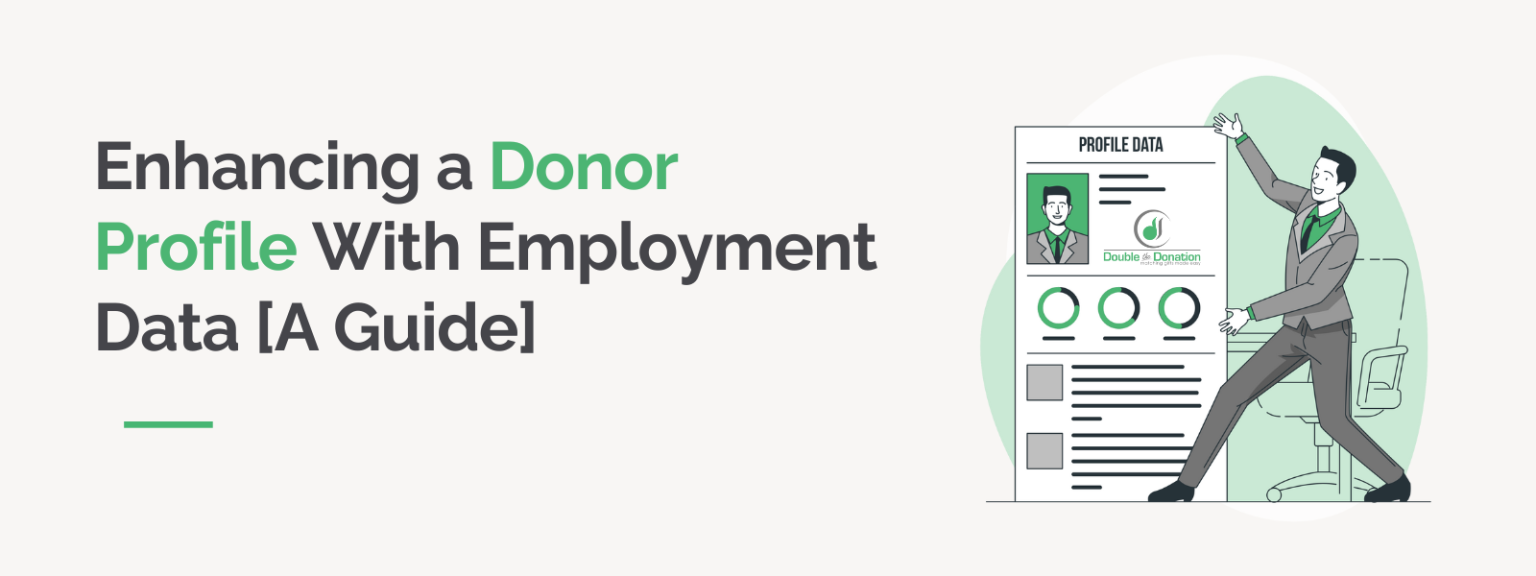
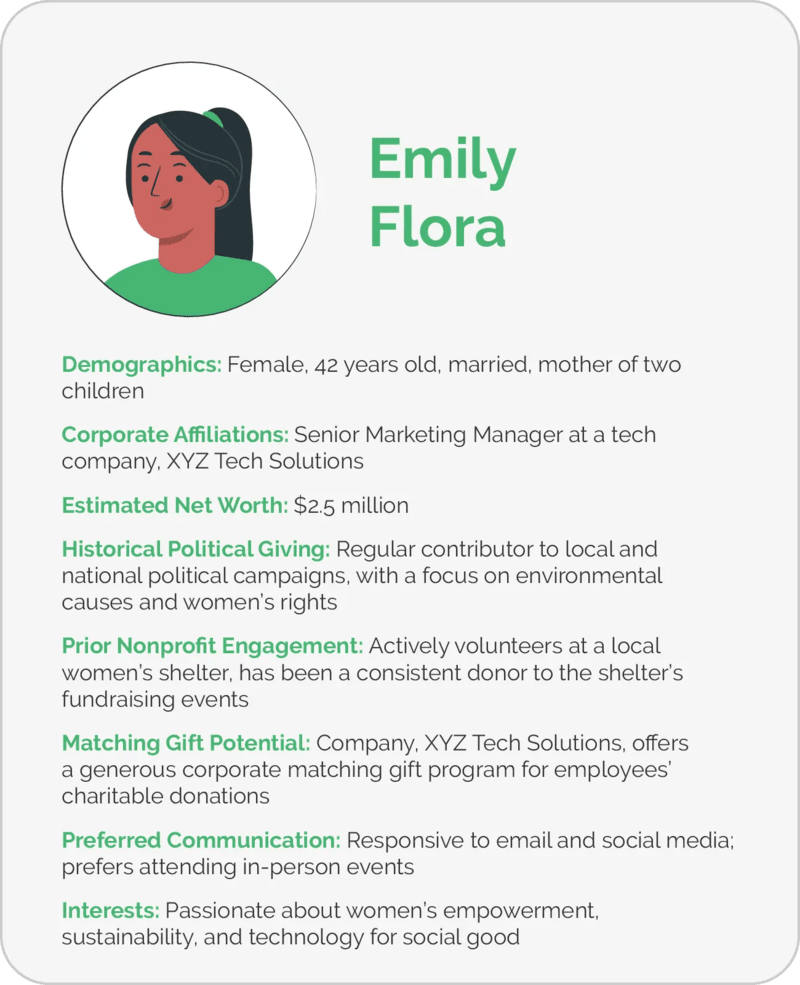
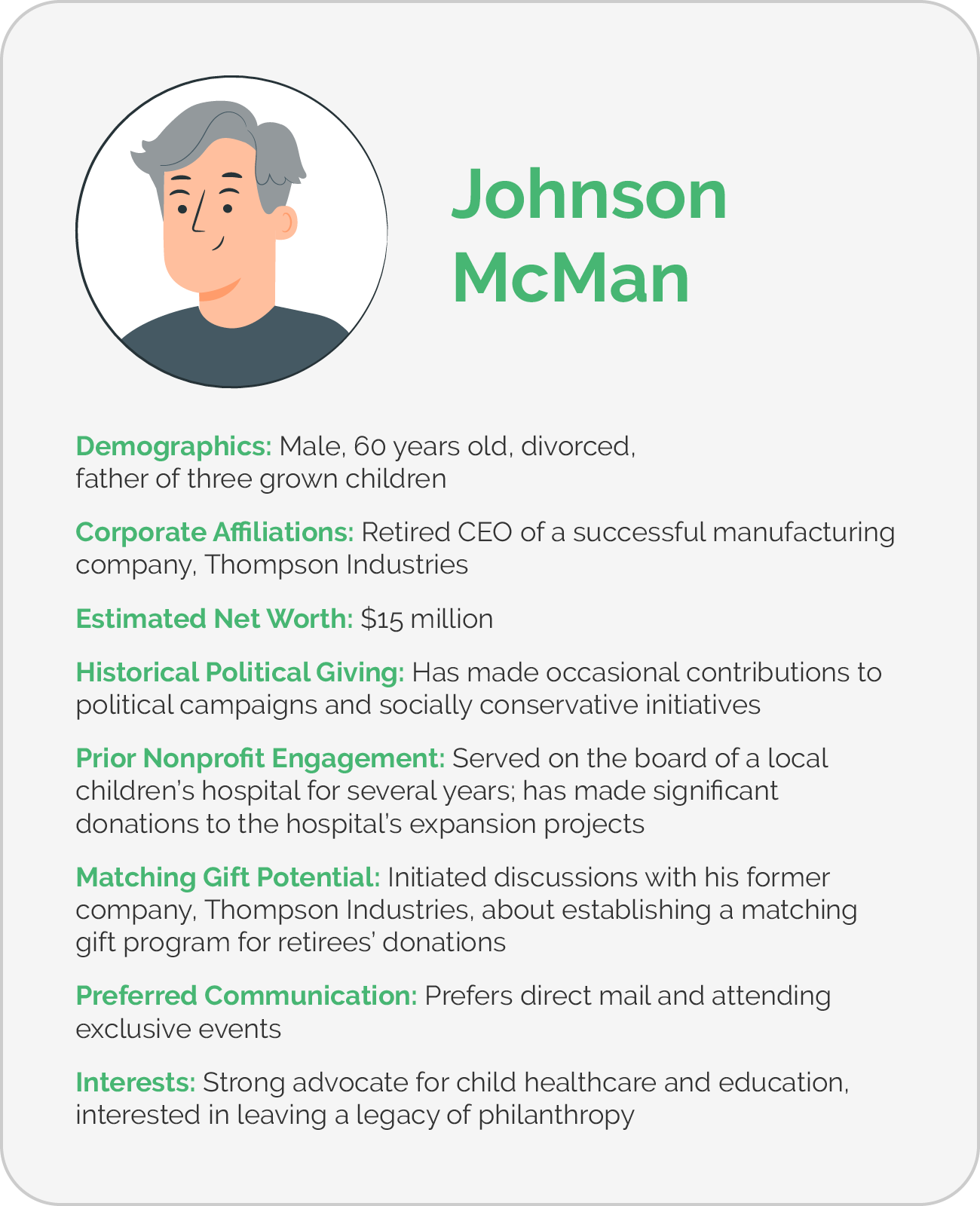

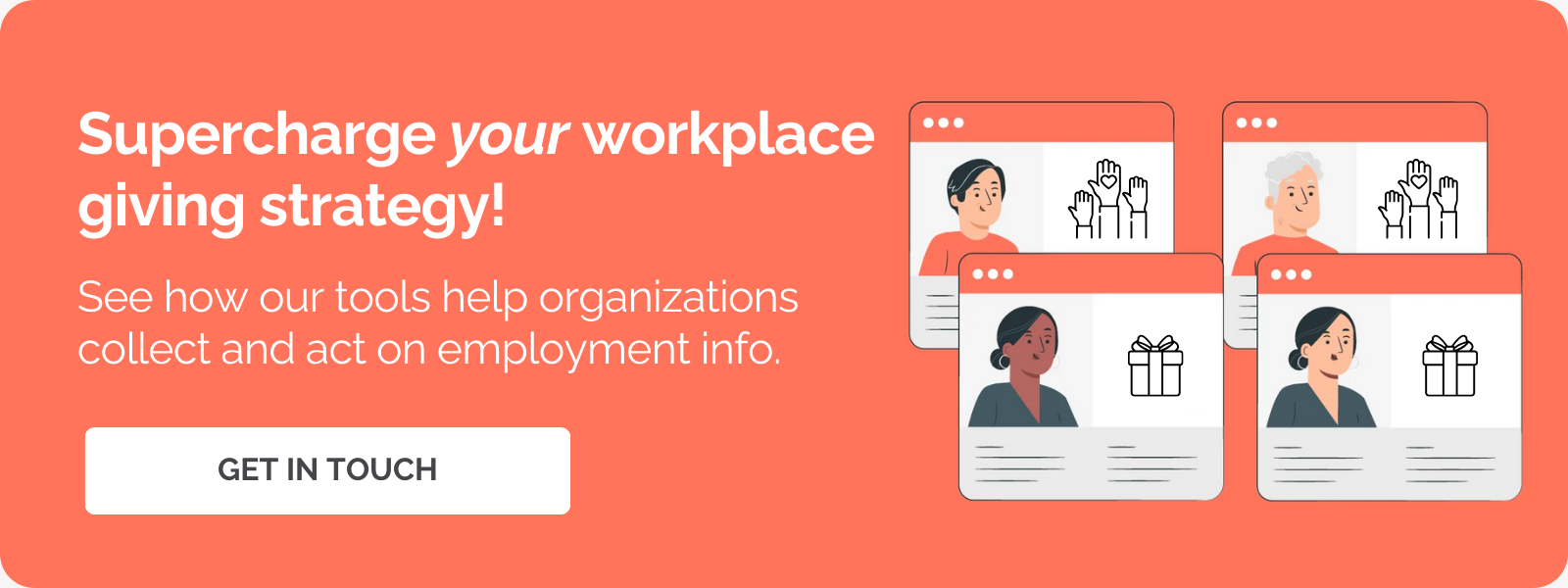
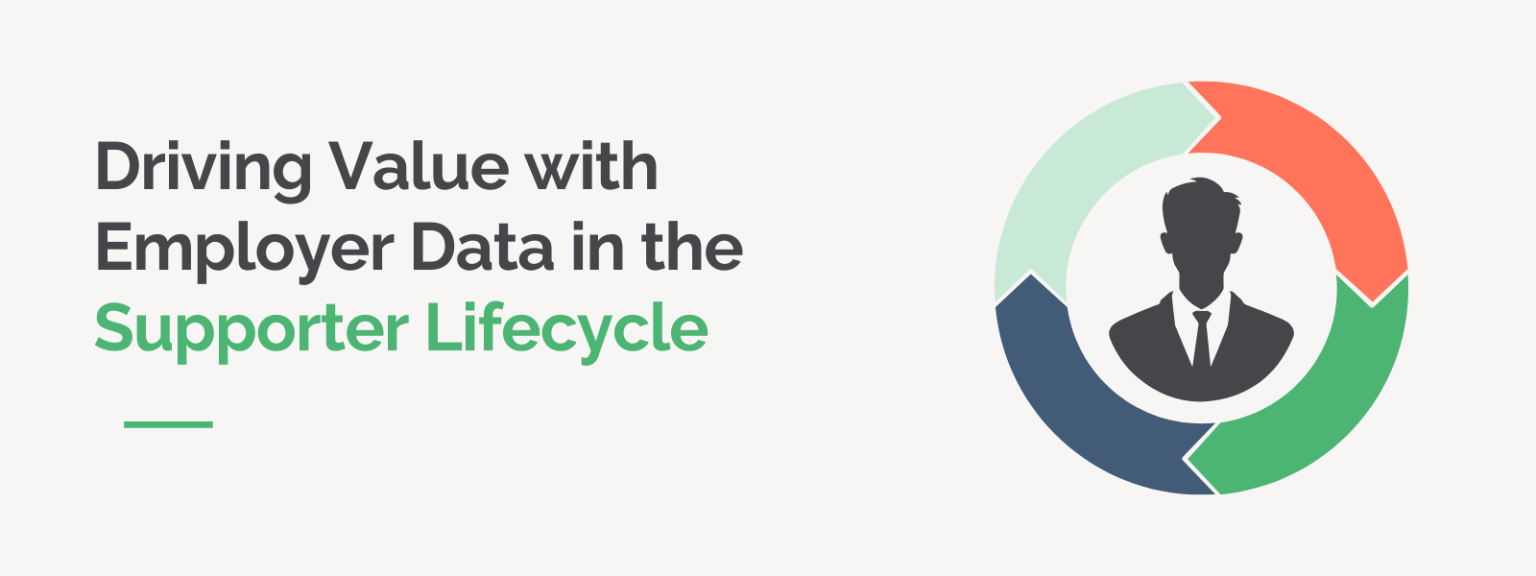
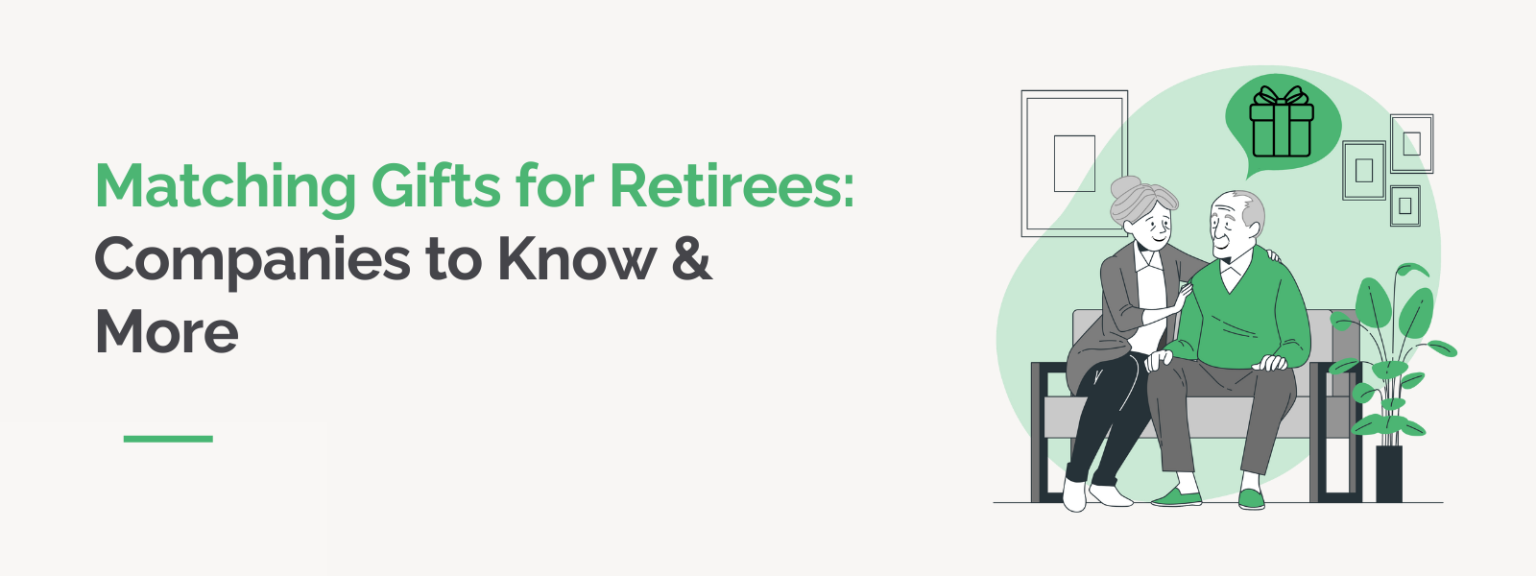


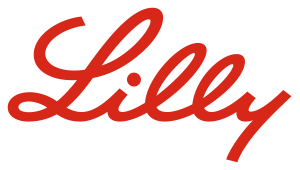







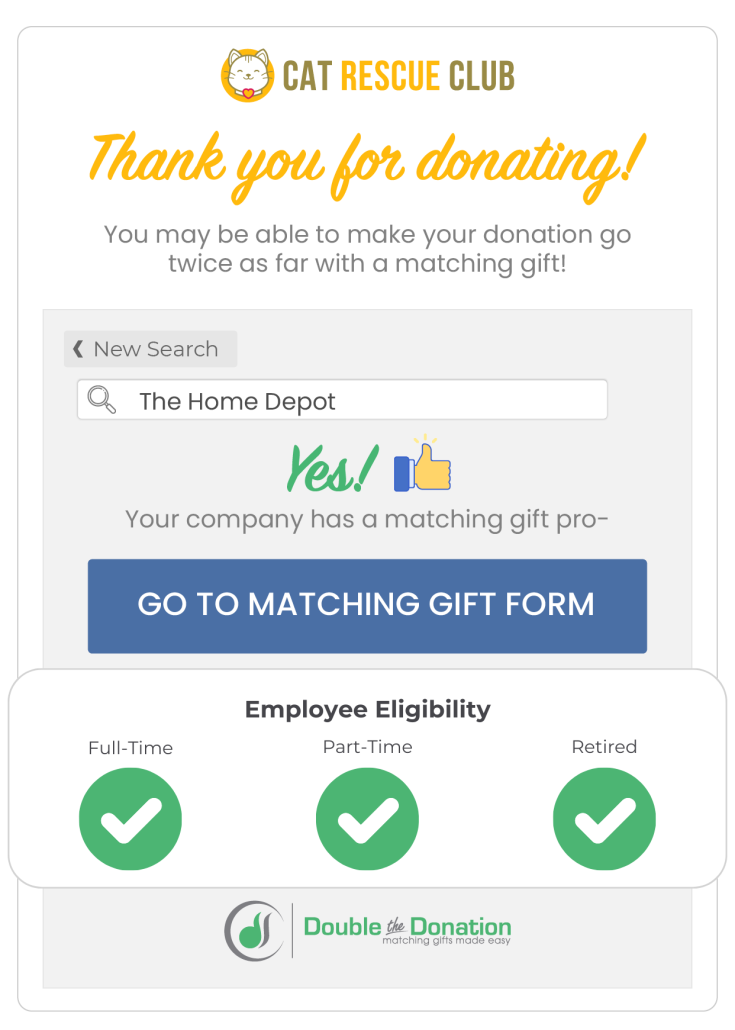

![Driving Donor Retention With Matching Gifts [A Guide]](https://doublethedonation.com/wp-content/uploads/2015/09/DTD_Driving-Donor-Retention-With-Matching-Gifts-A-Guide_Feature-1536x576.png)
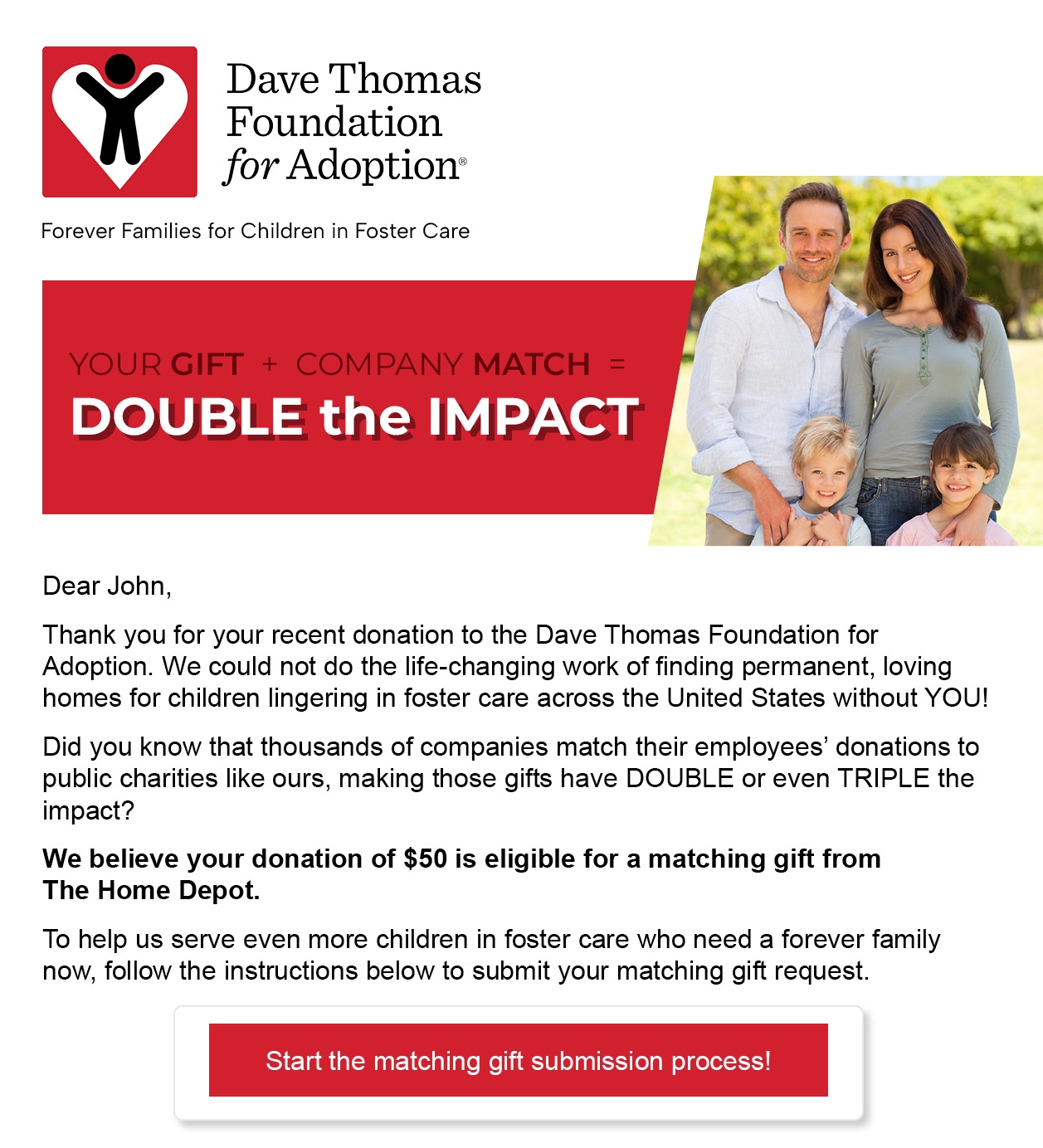

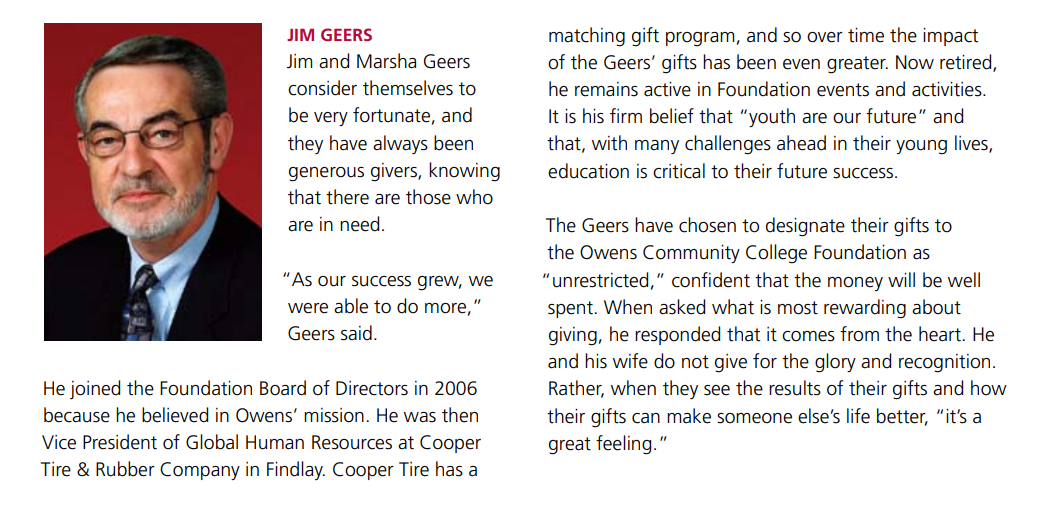
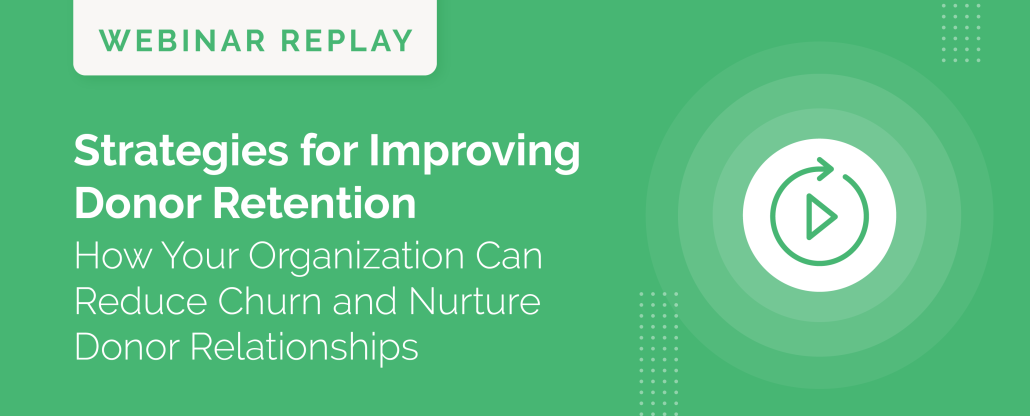
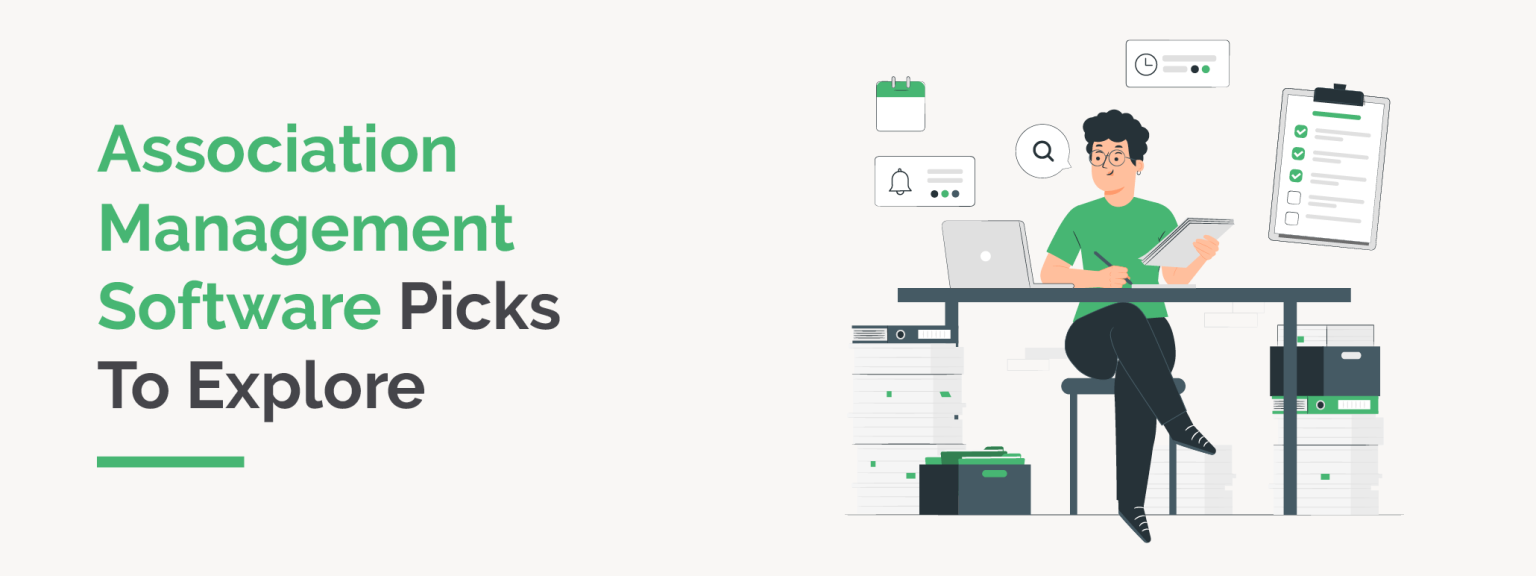

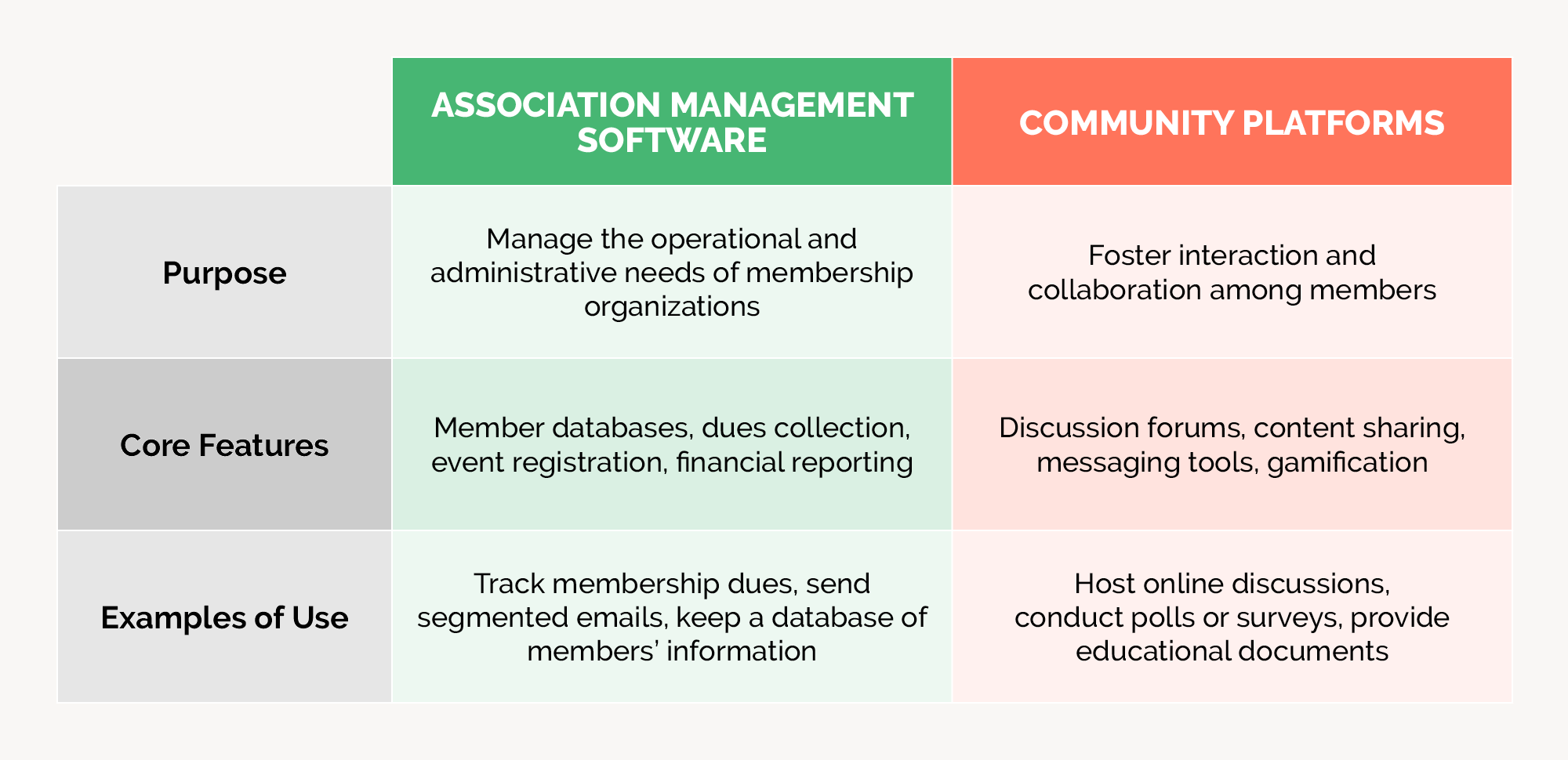
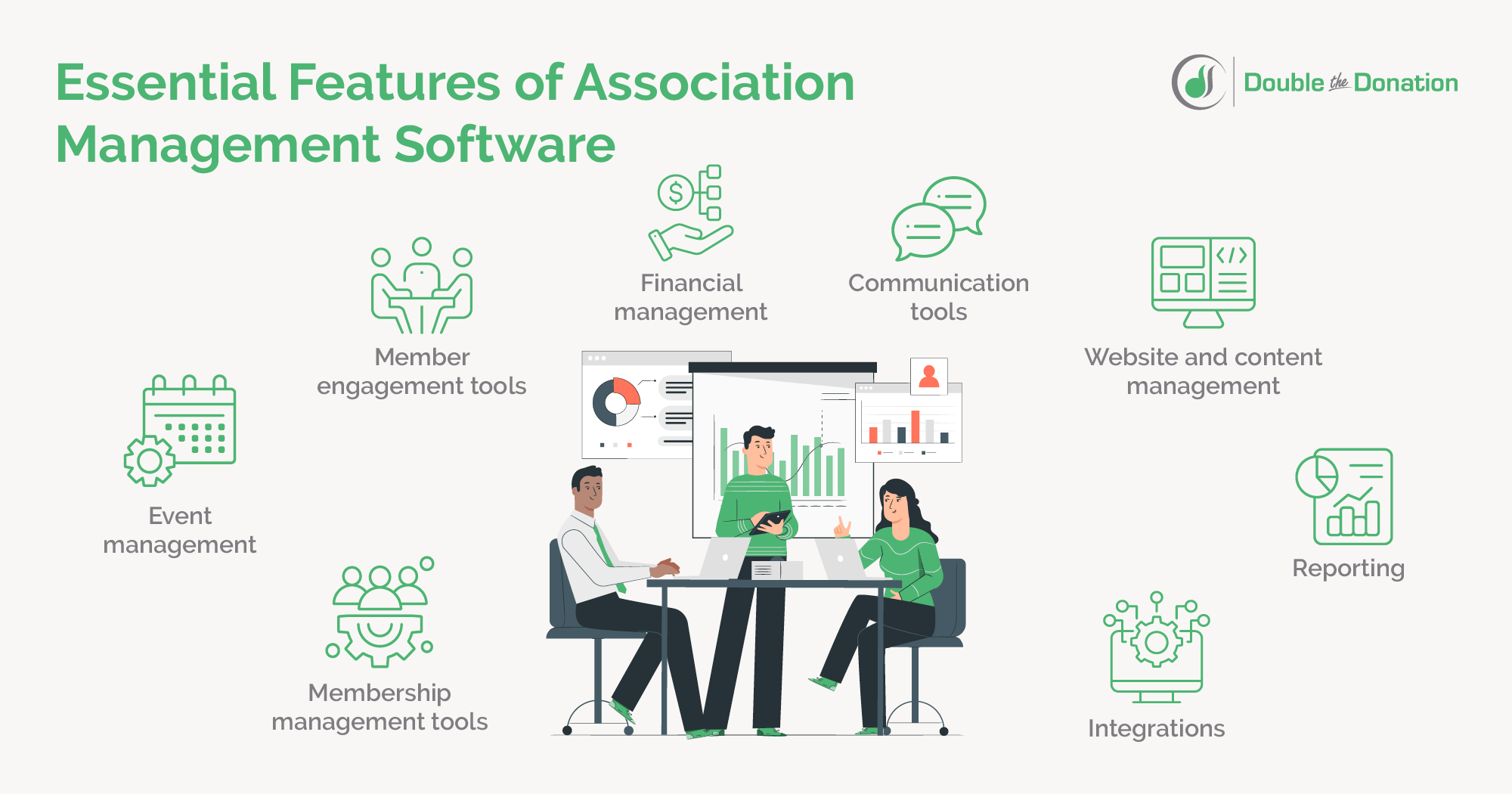


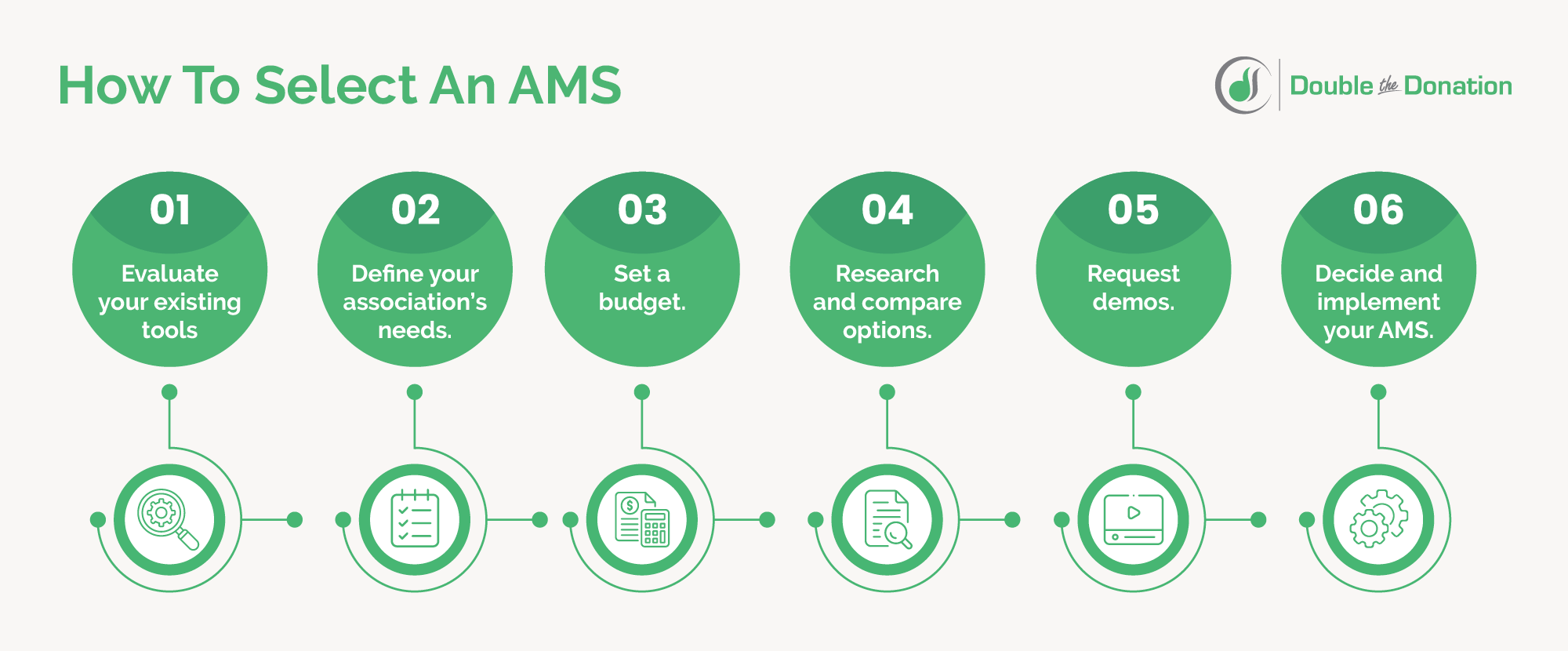

![How to Write a Statement of Need for Grants [With Template]](https://doublethedonation.com/wp-content/uploads/2025/02/DTD_How-to-Write-a-Statement-of-Need-for-Grants-With-Template_Feature-1536x576.png)


